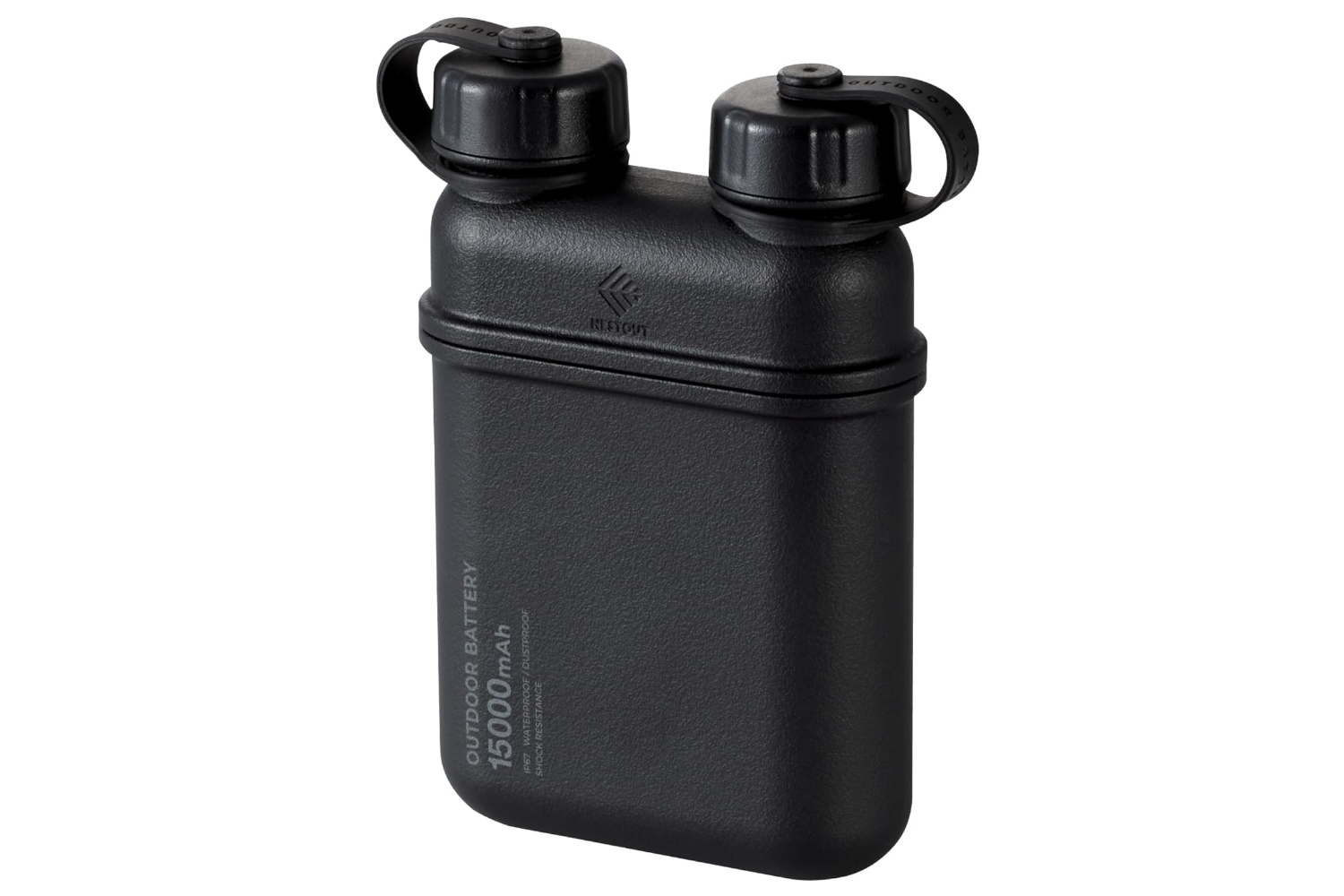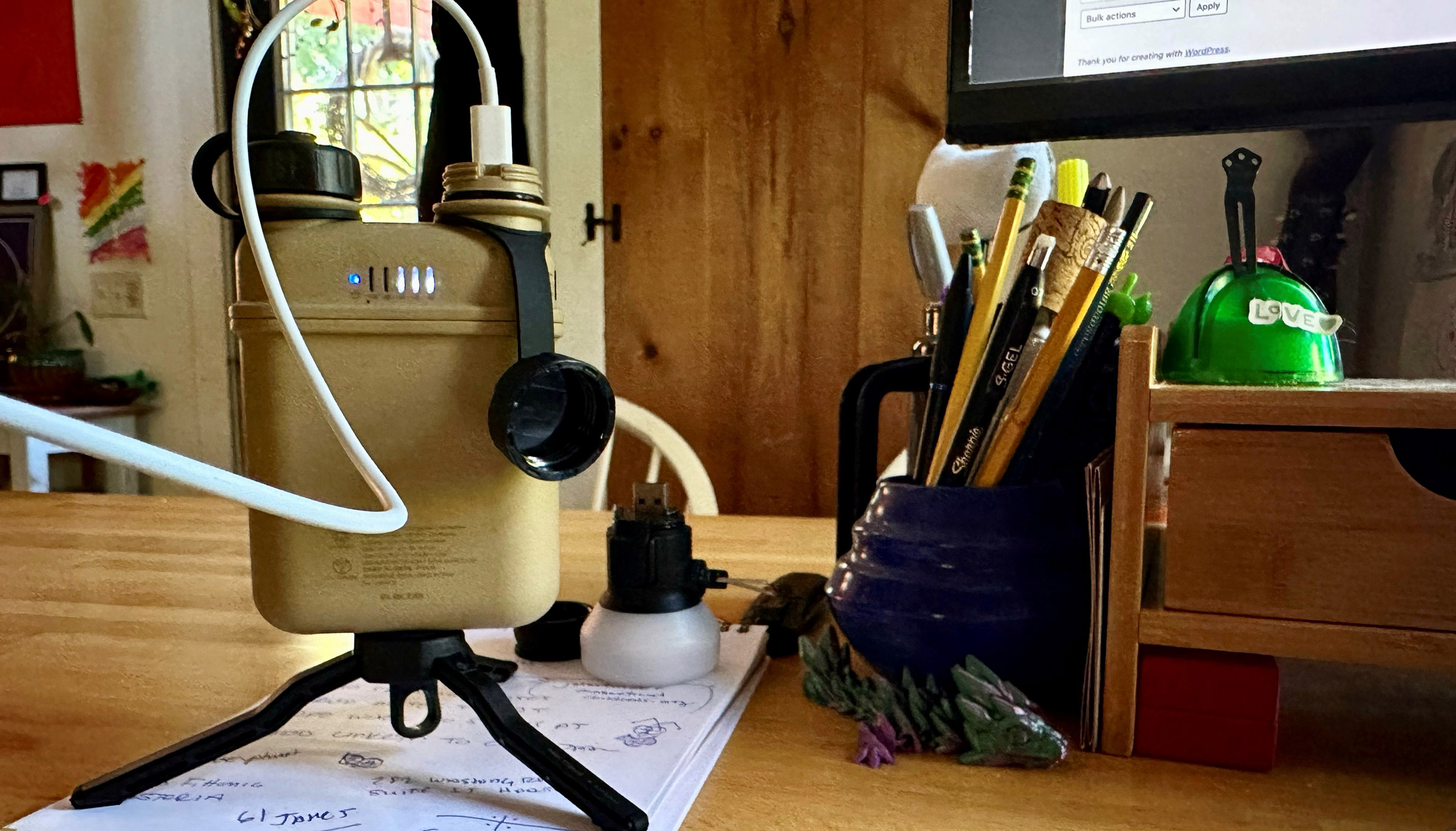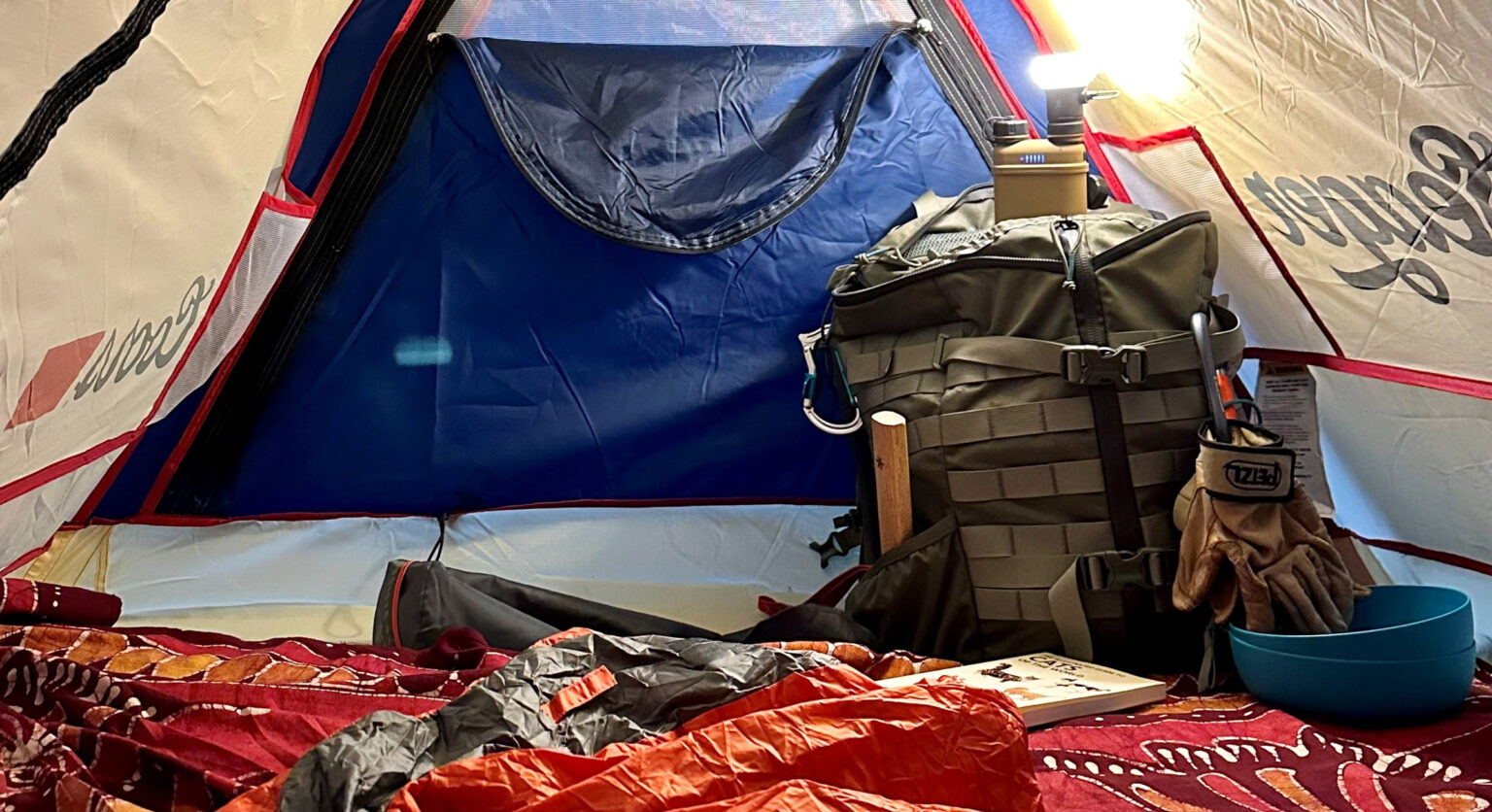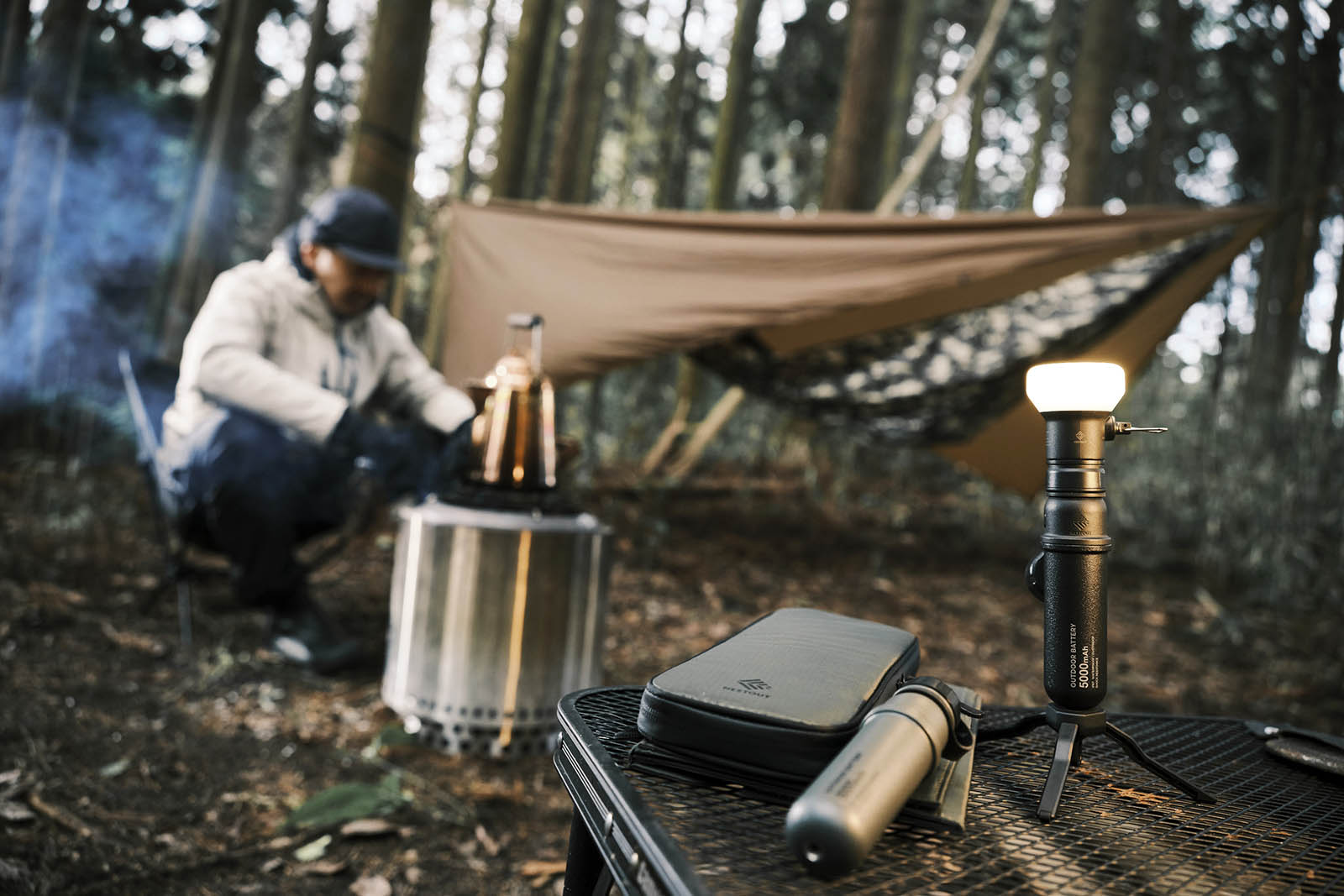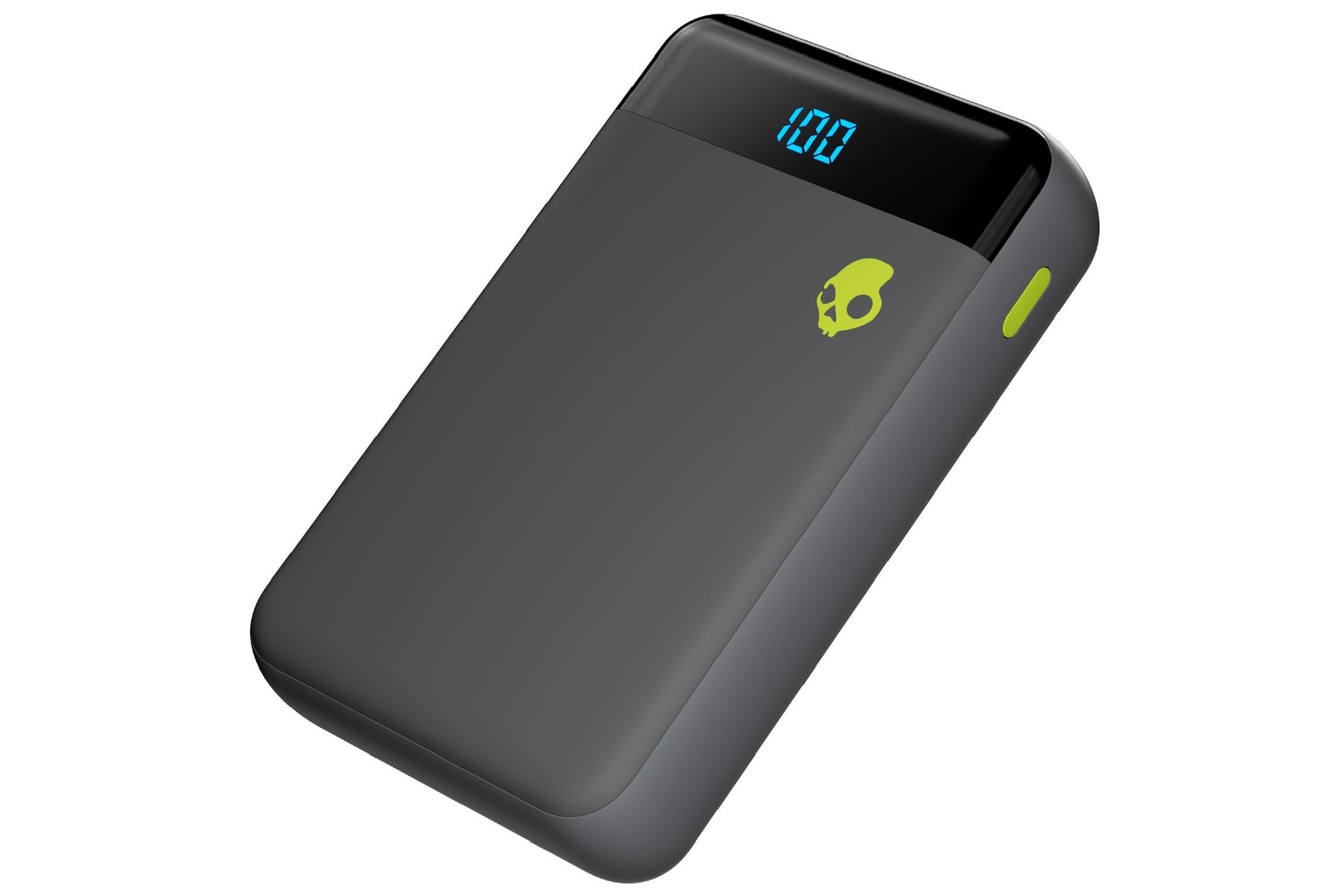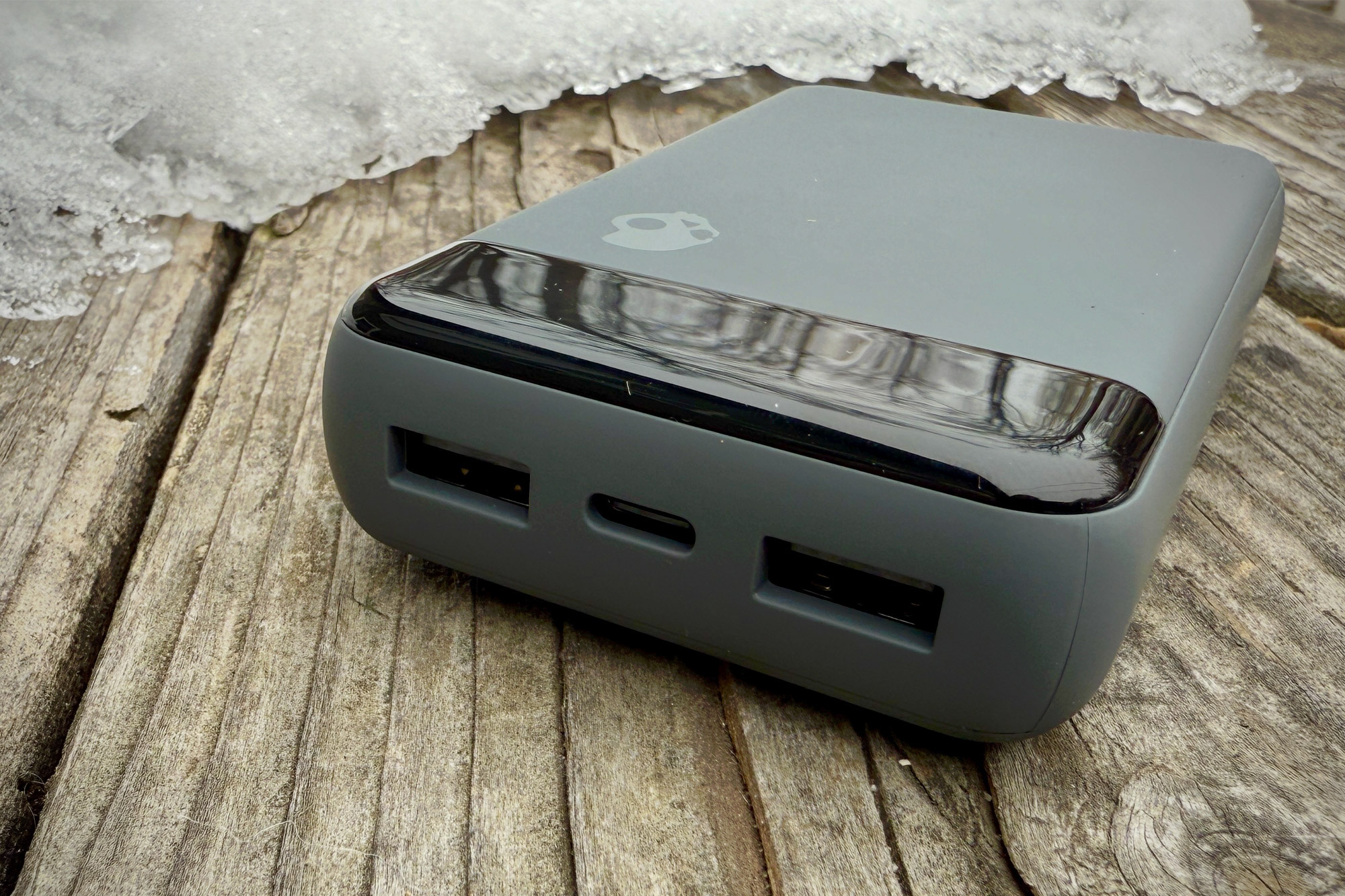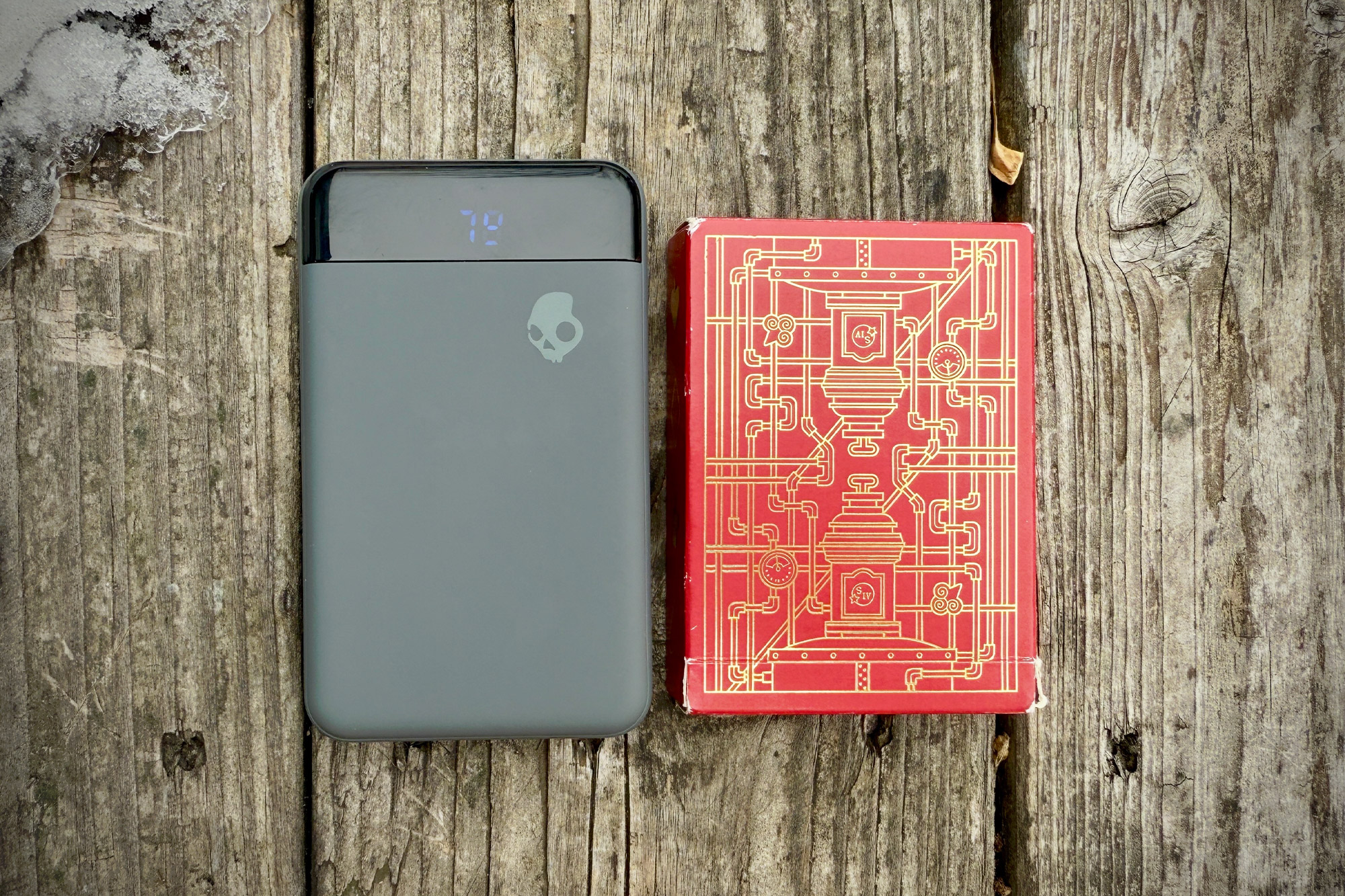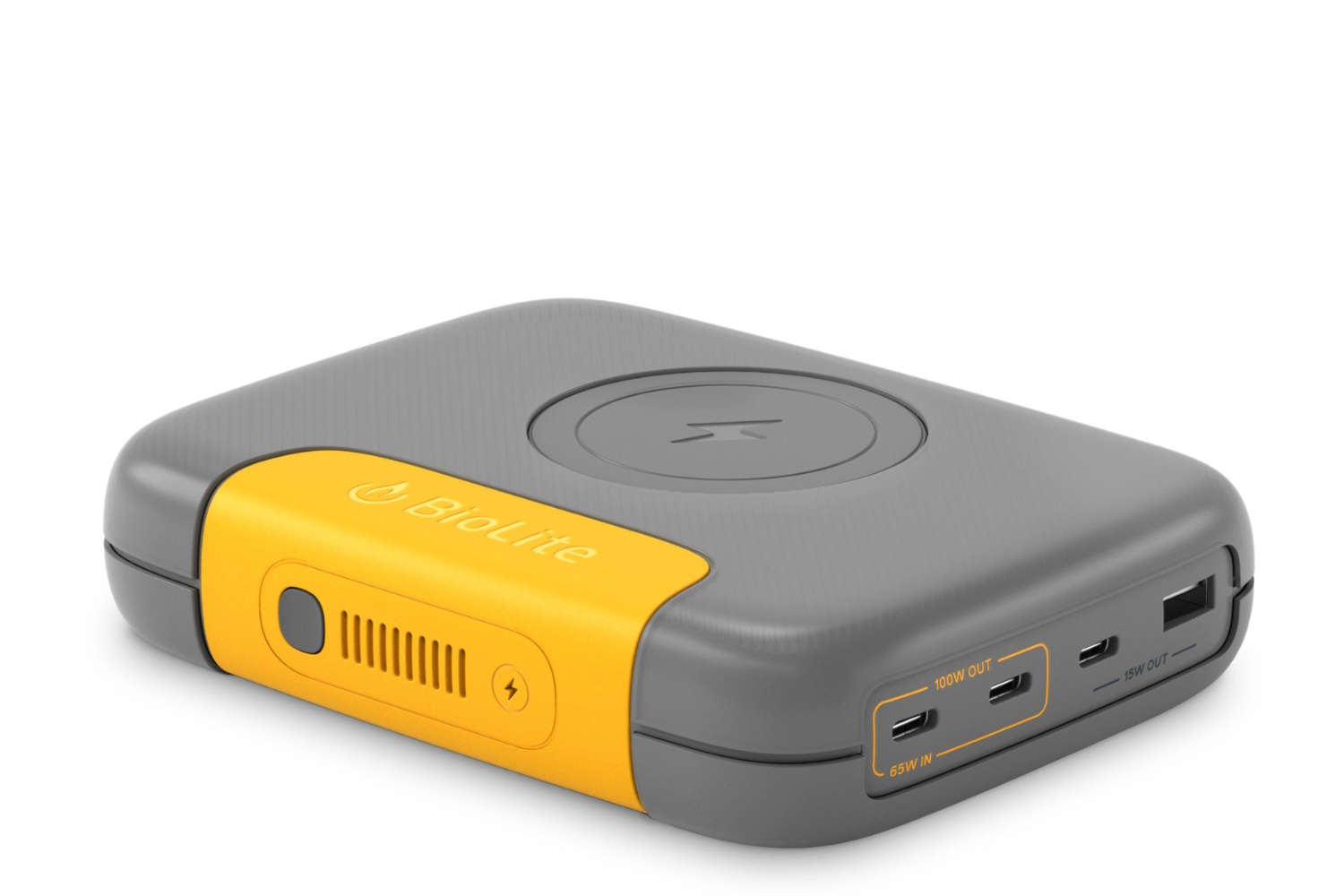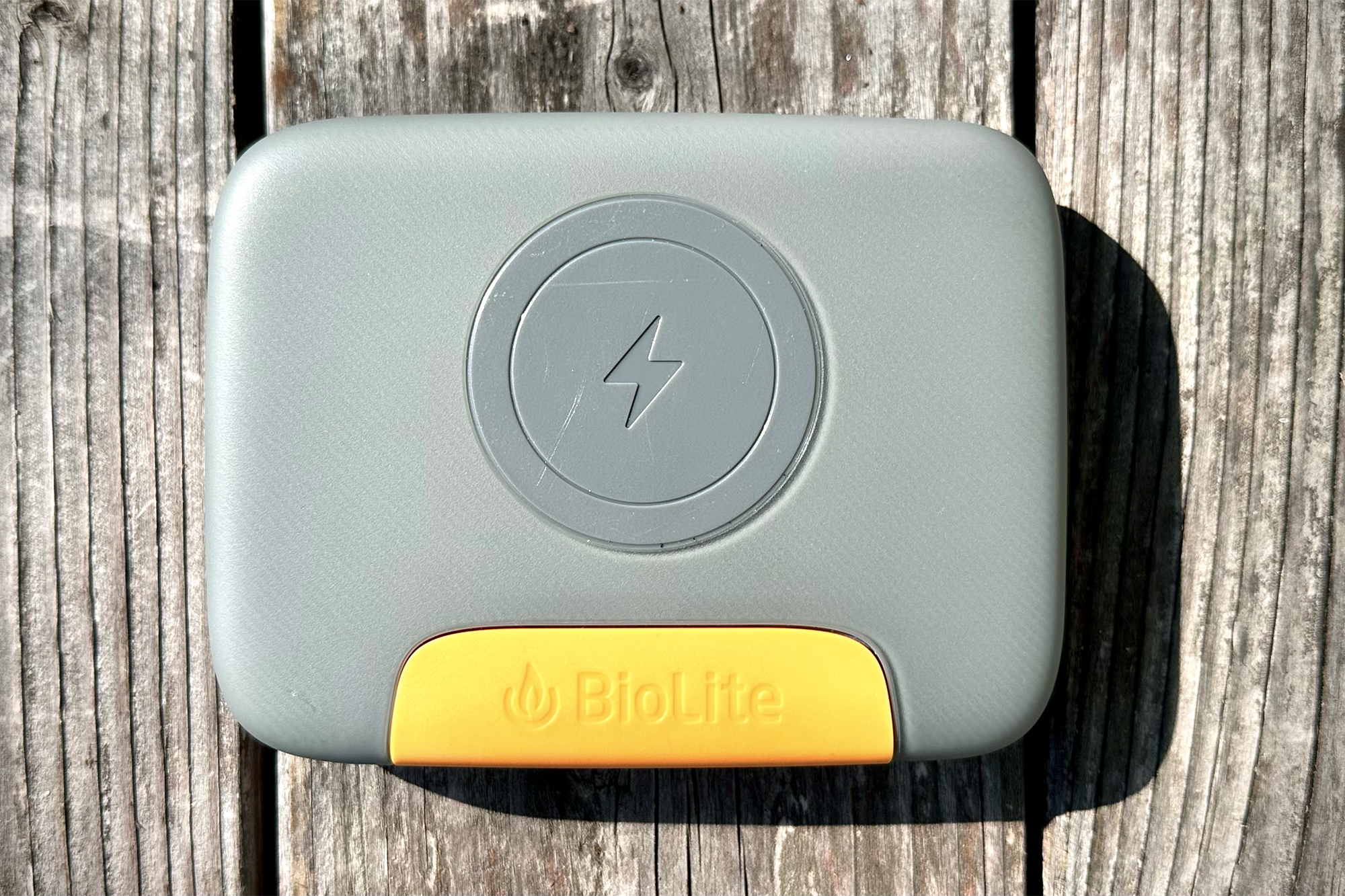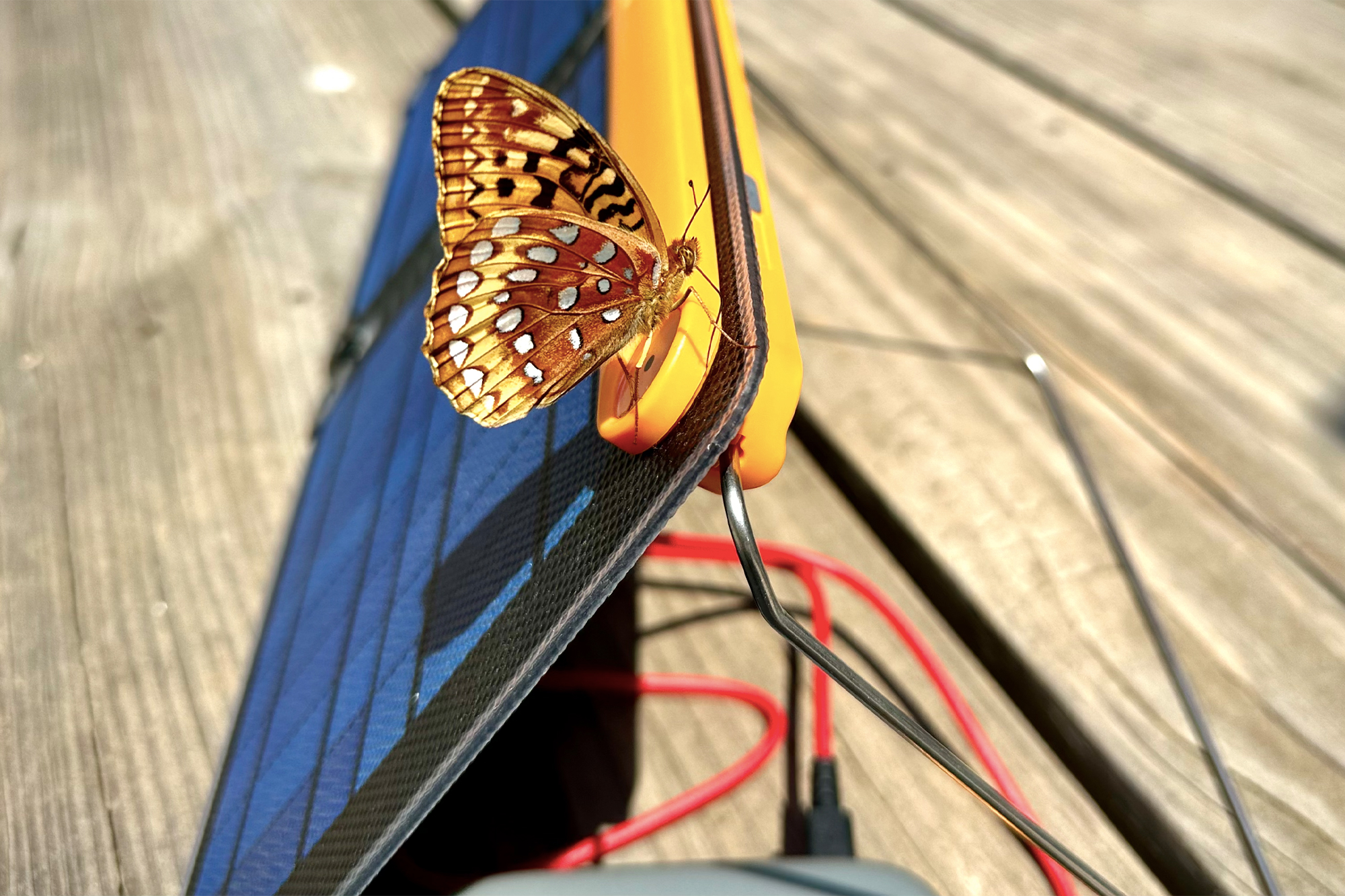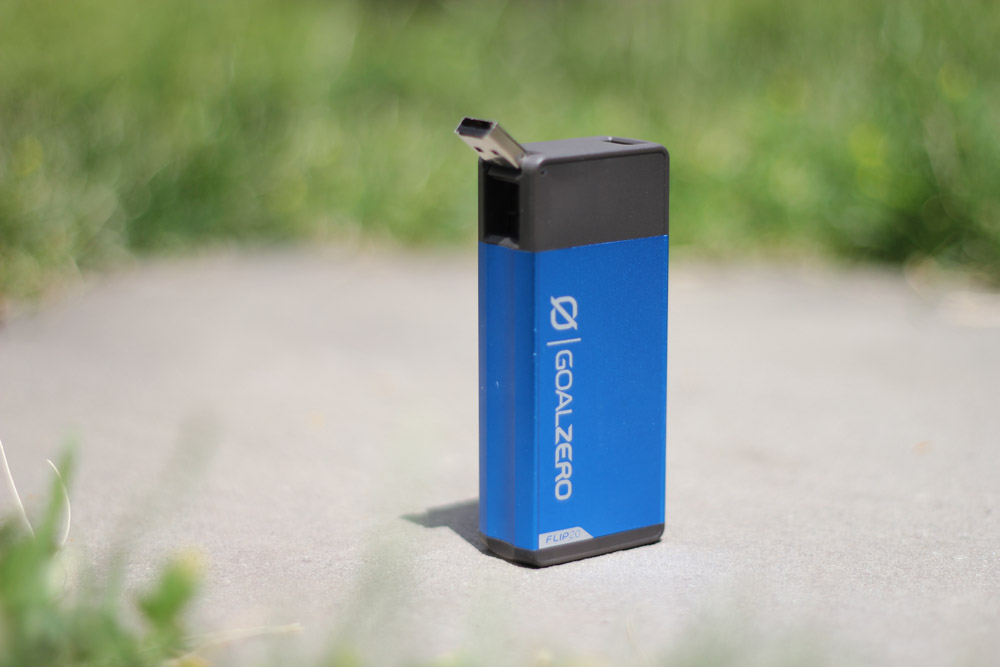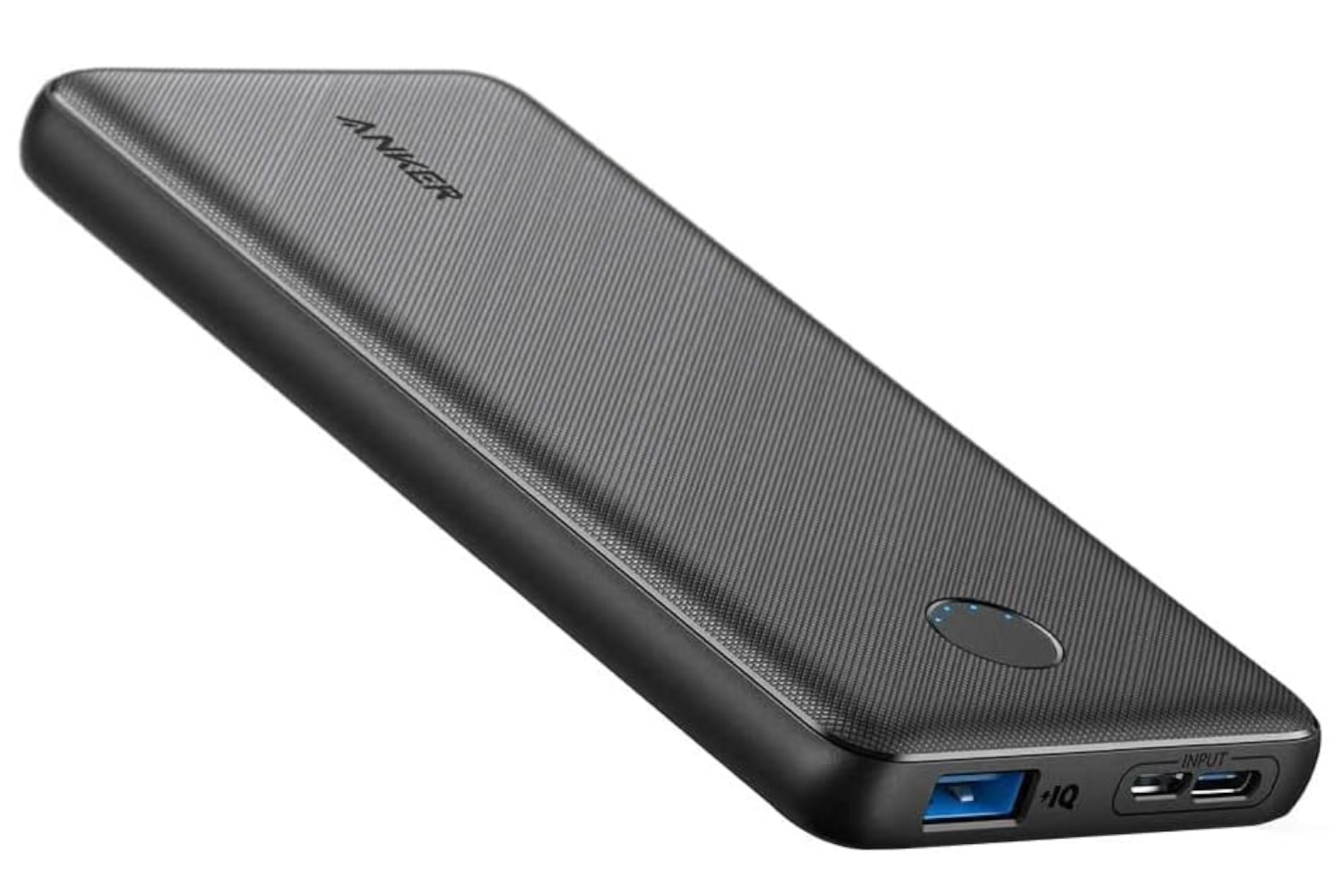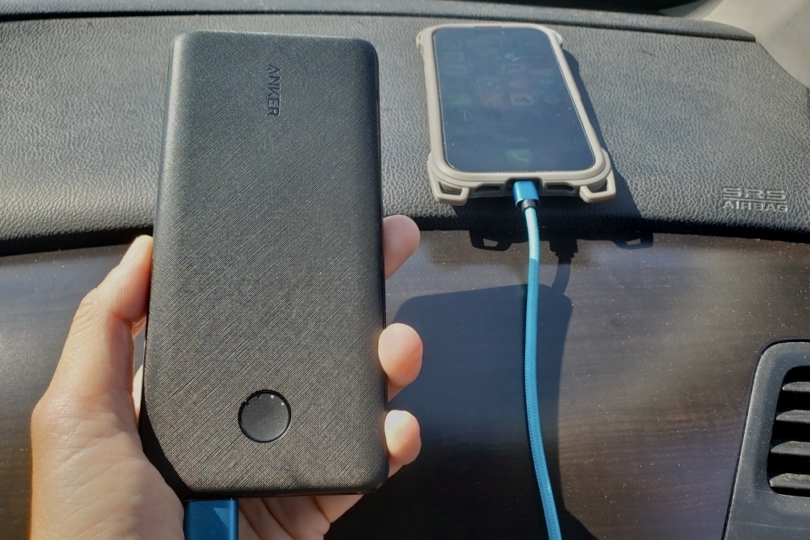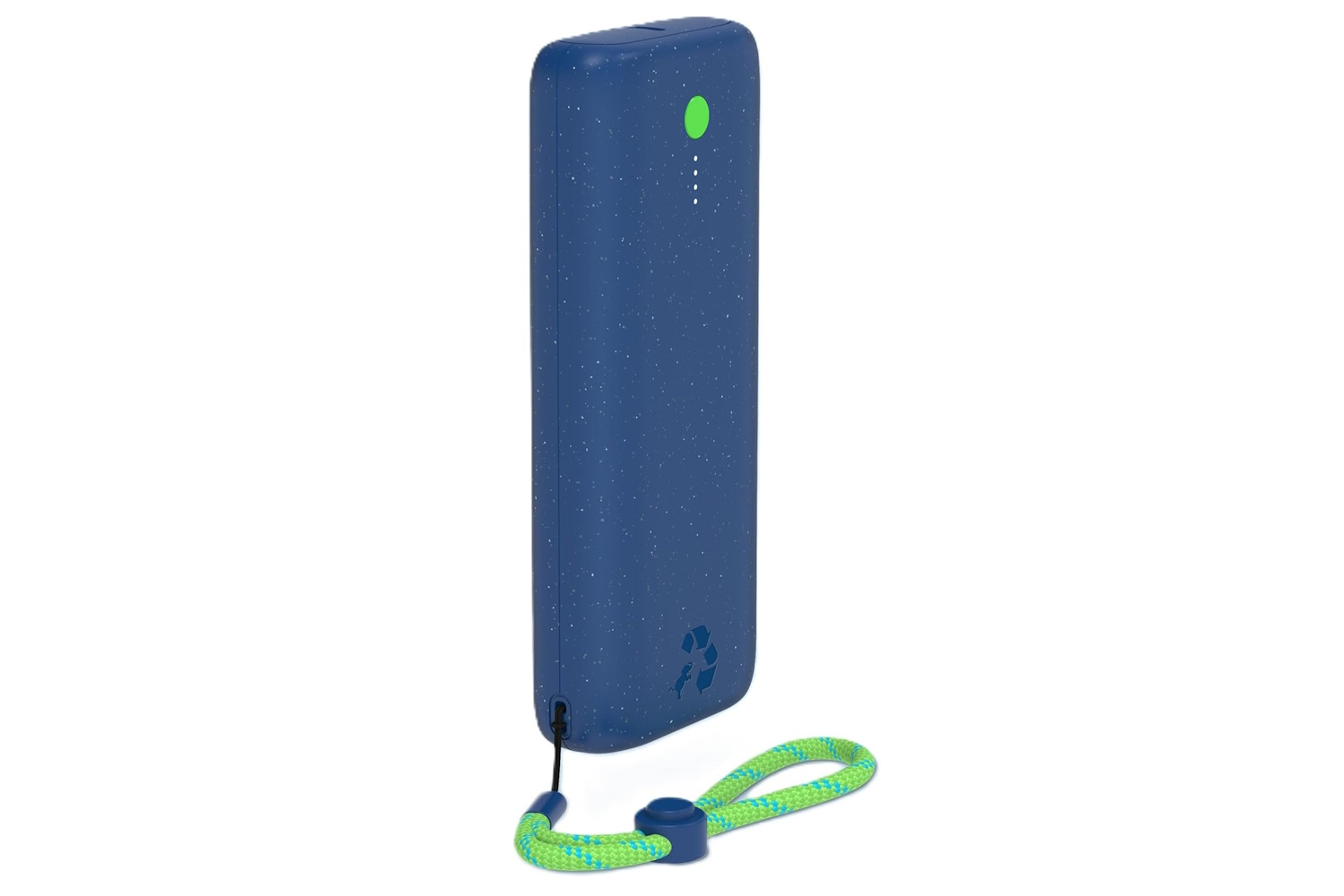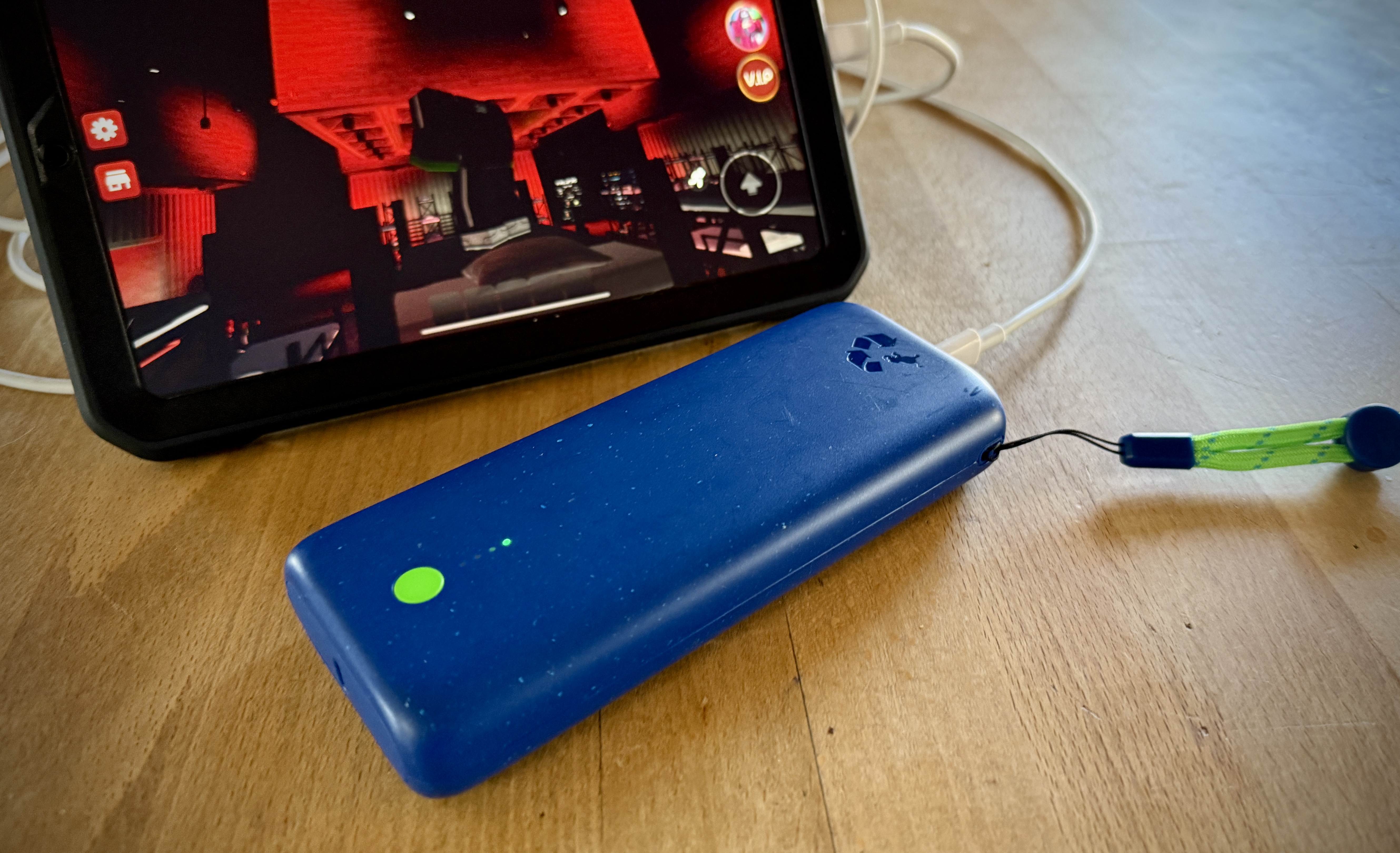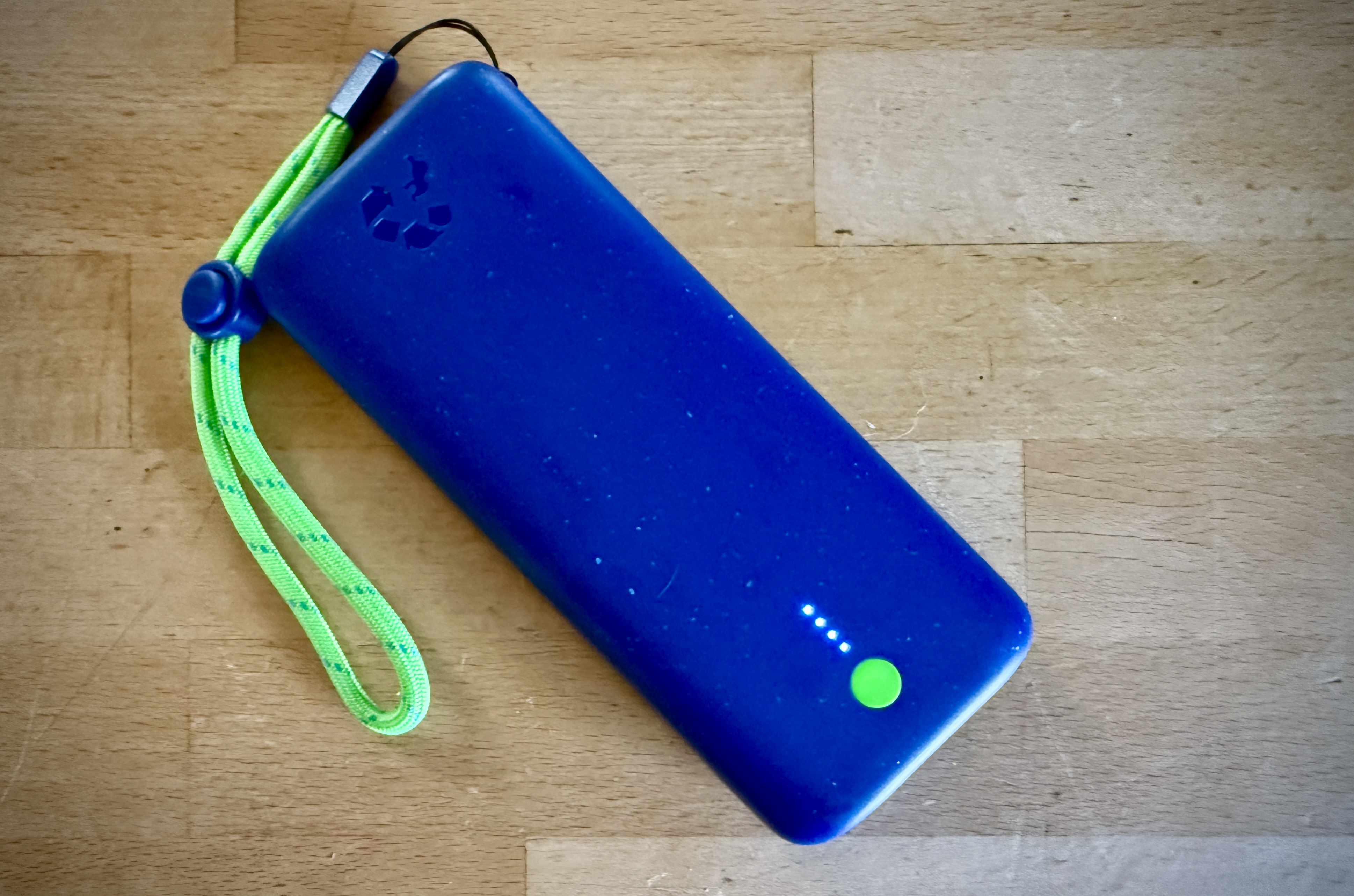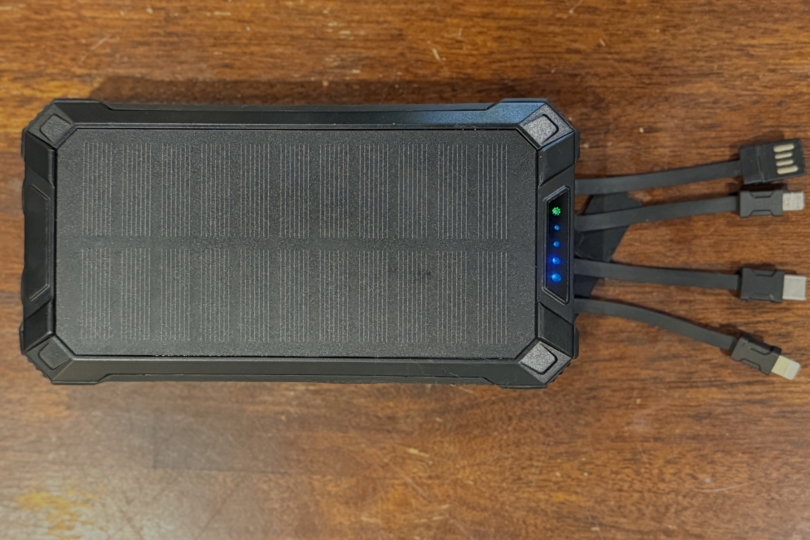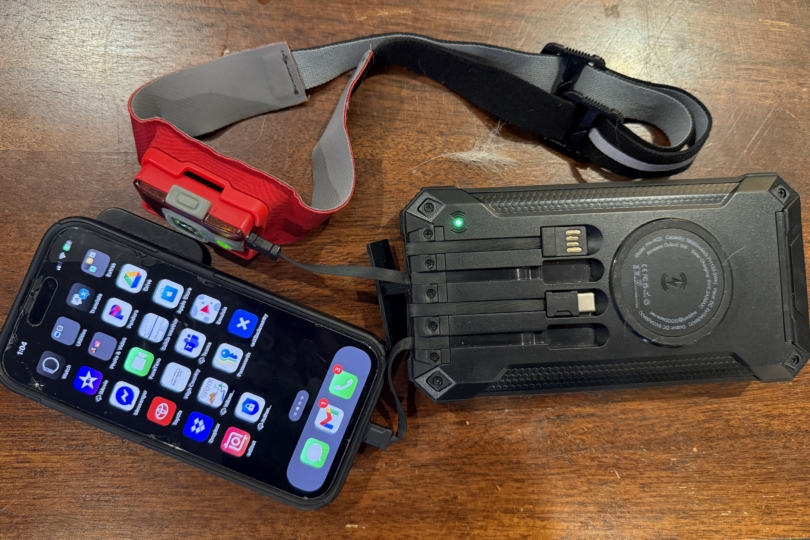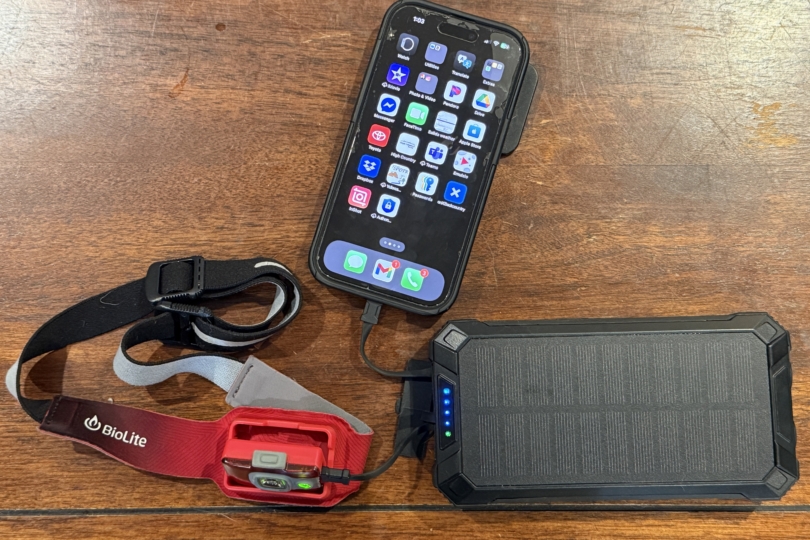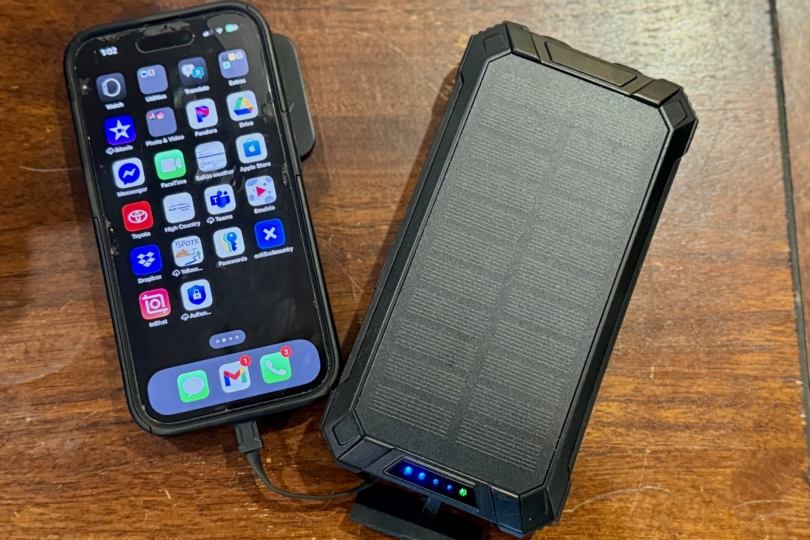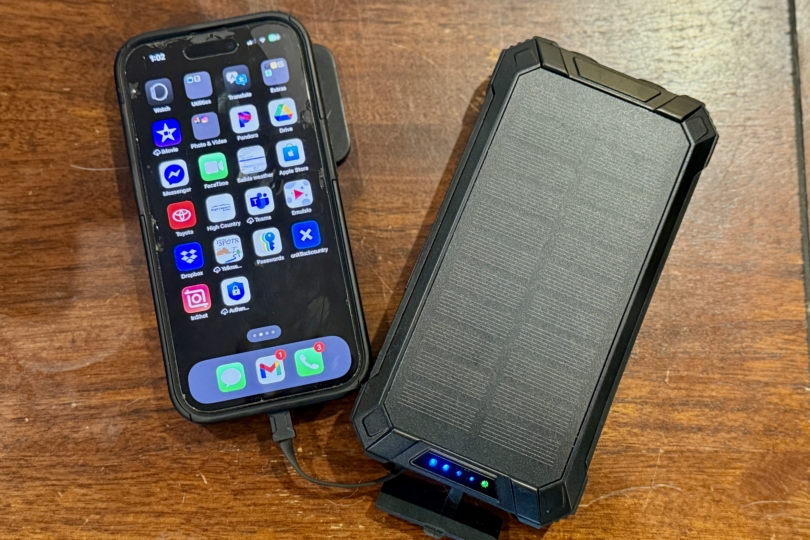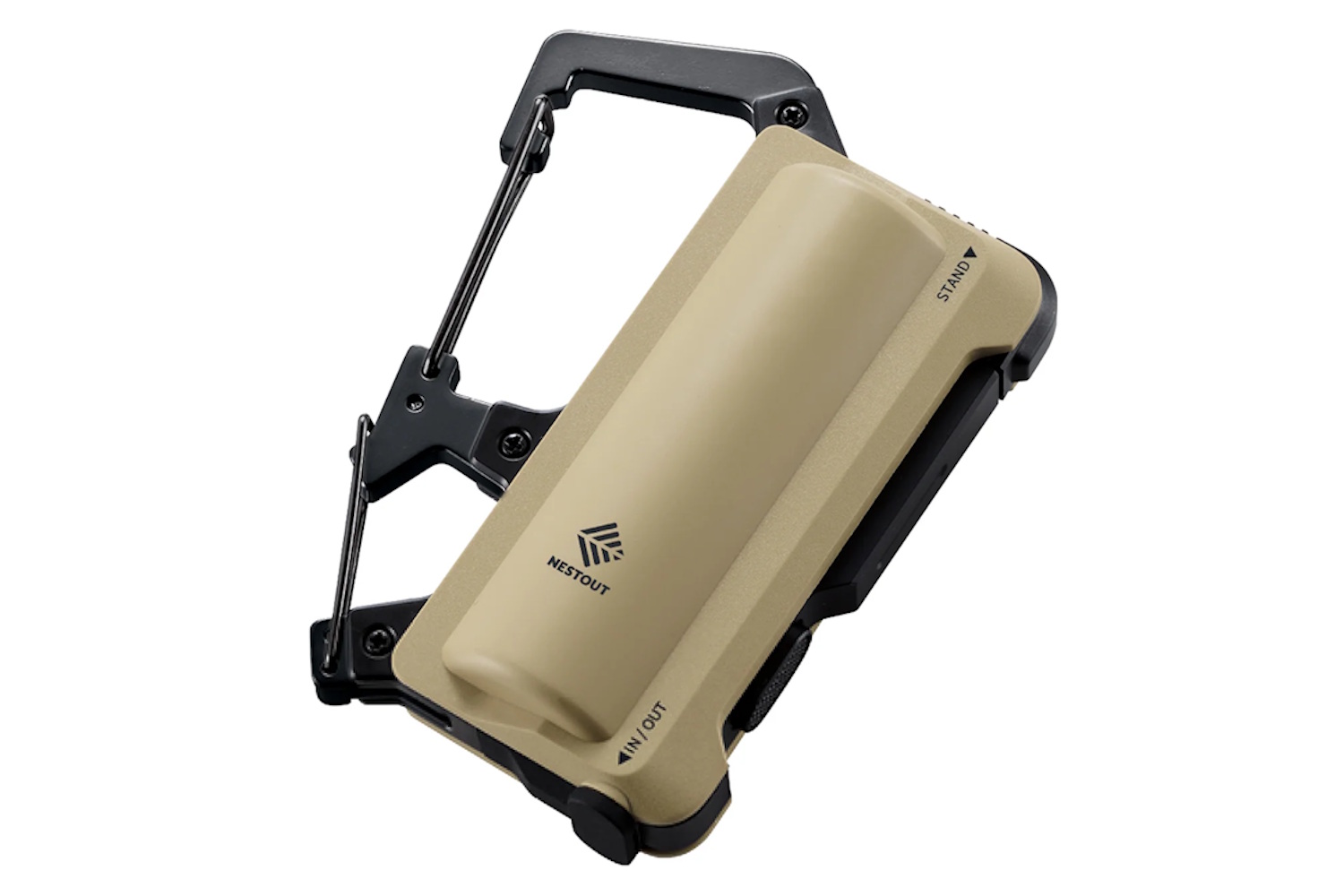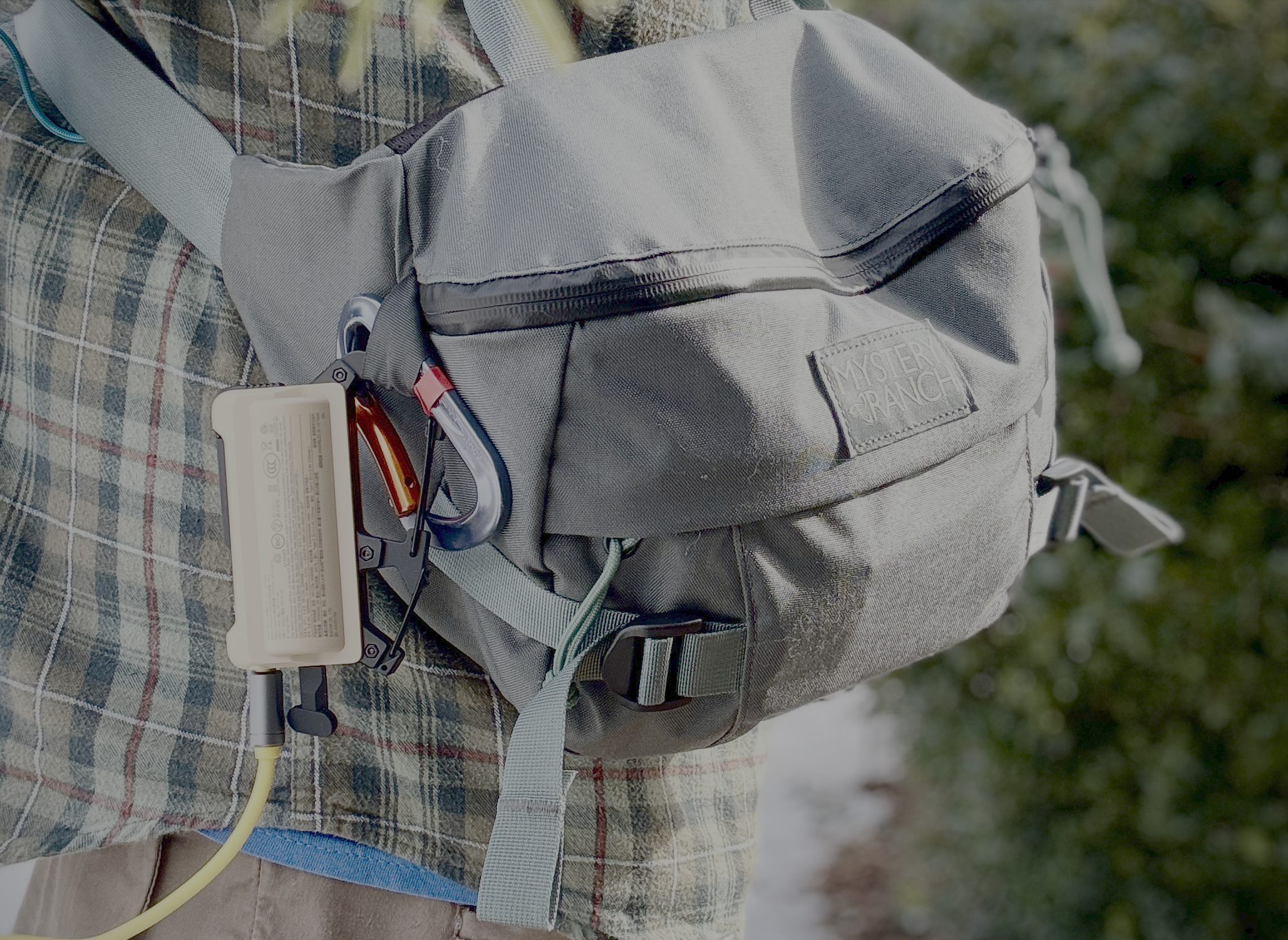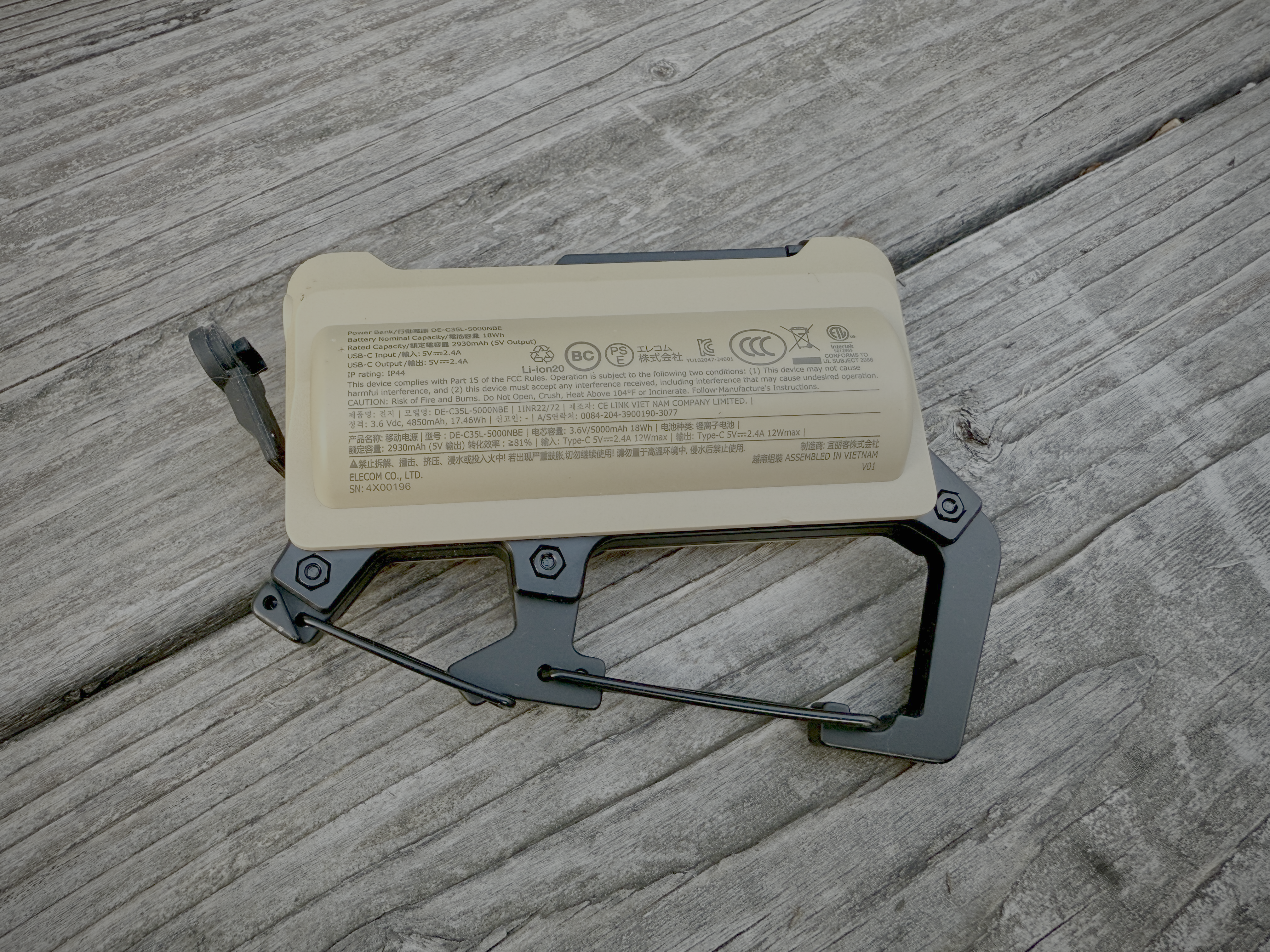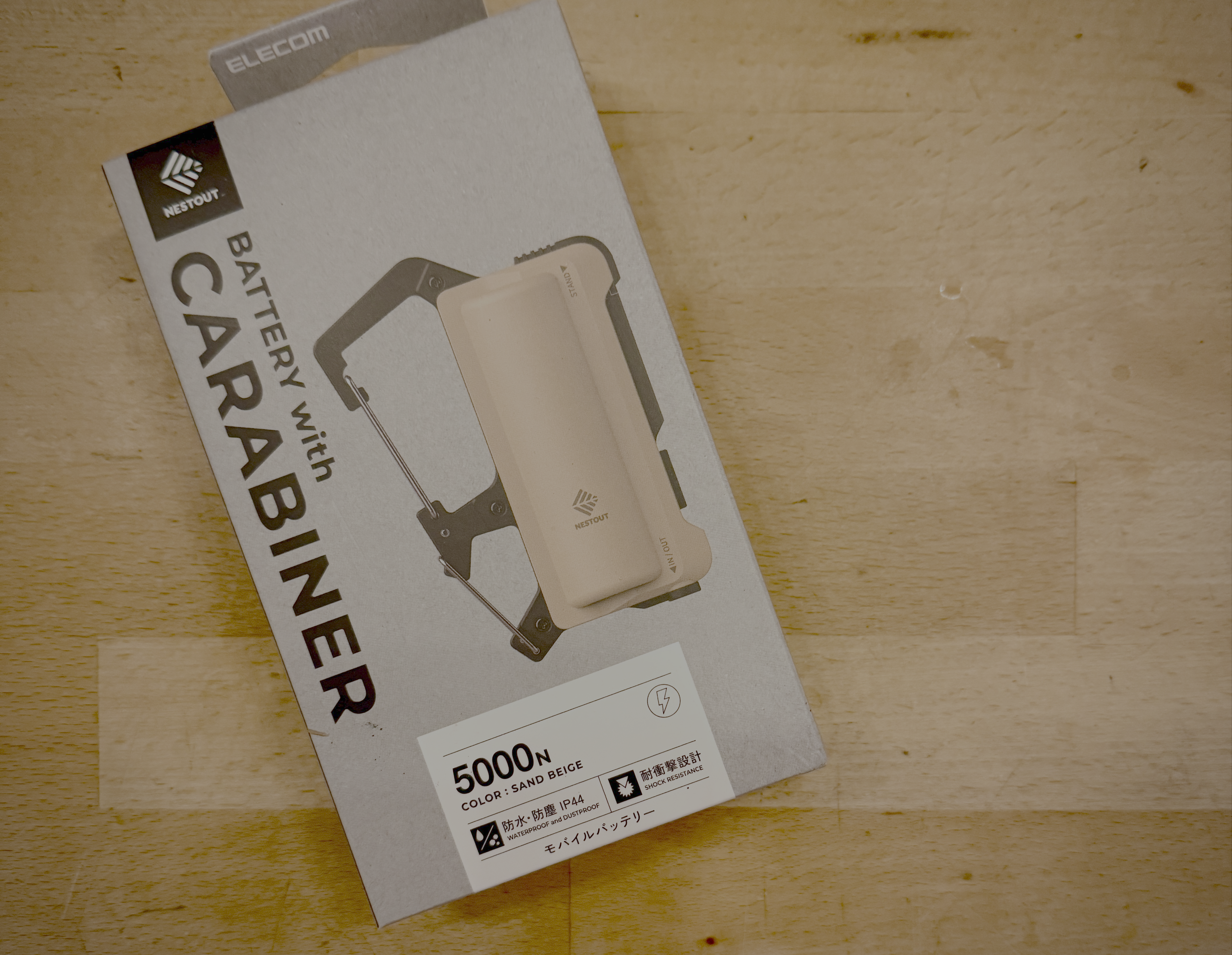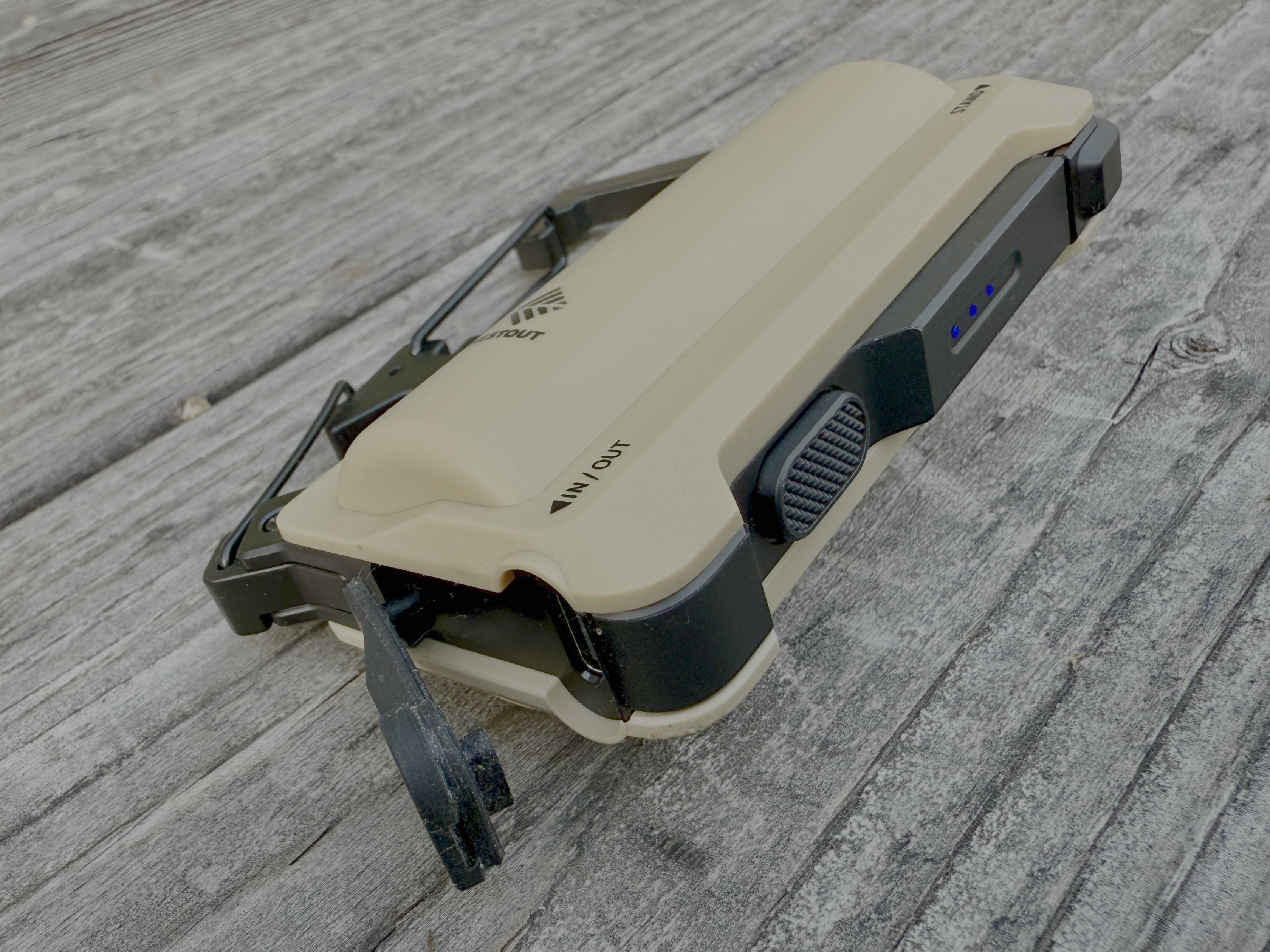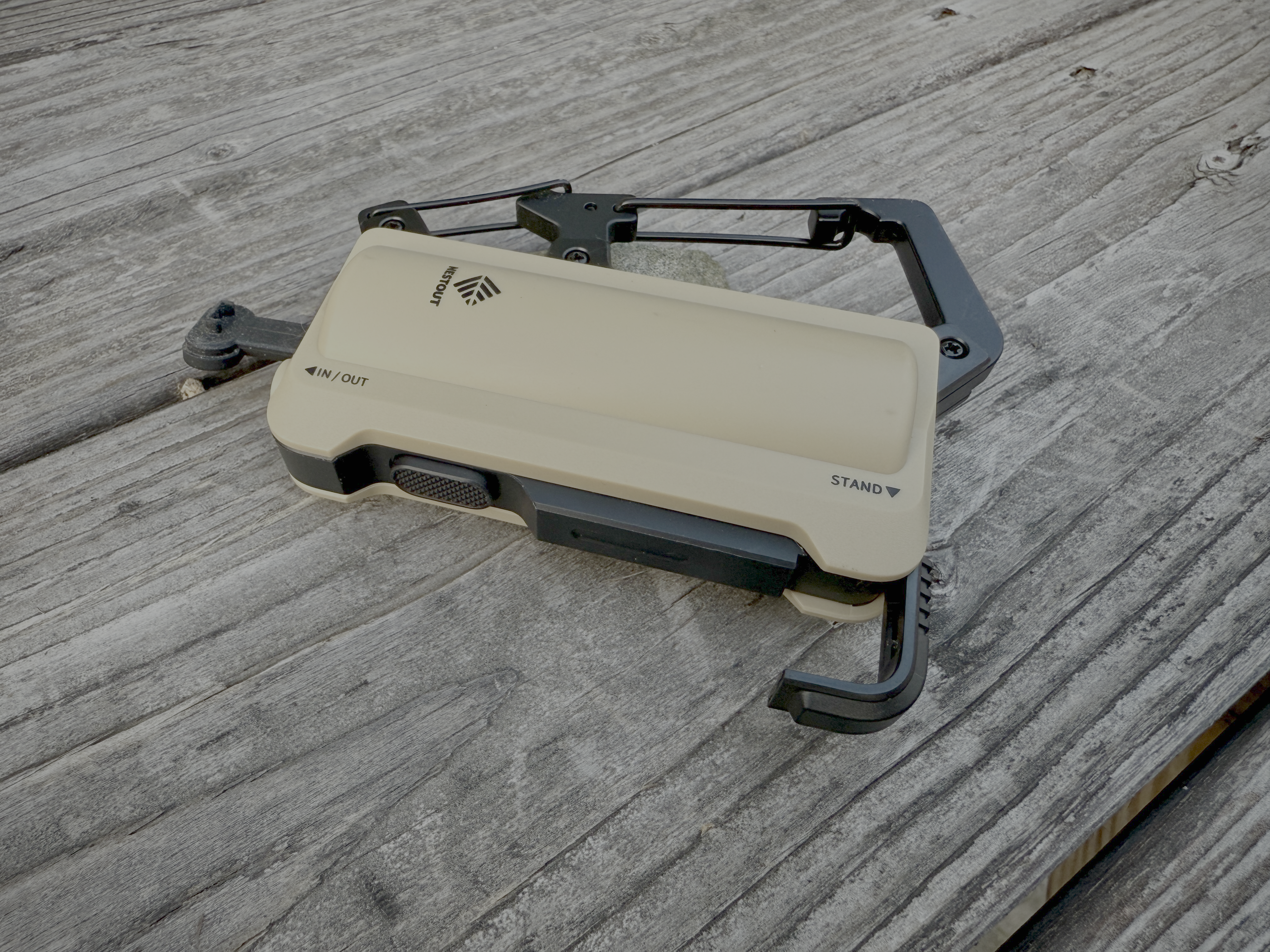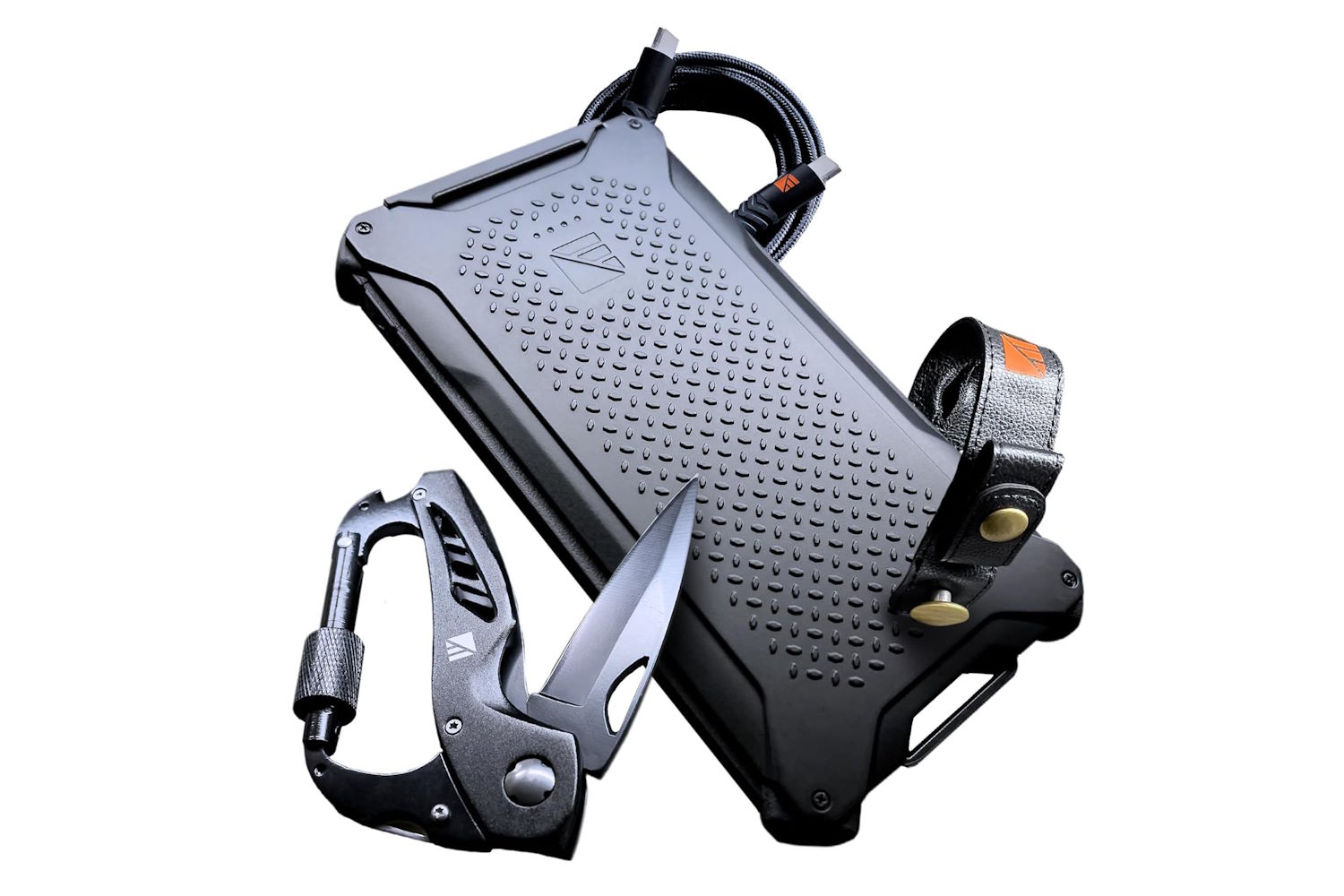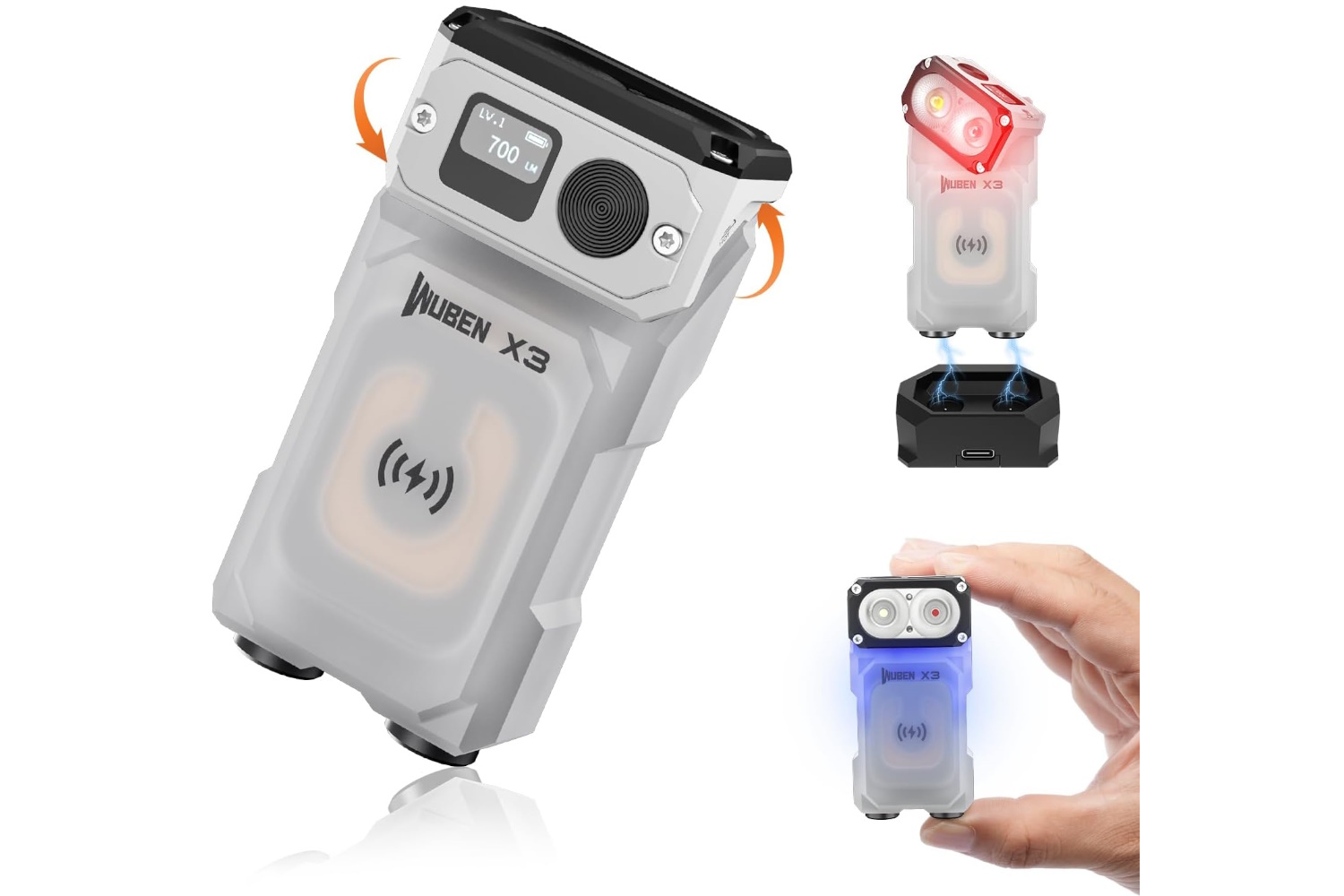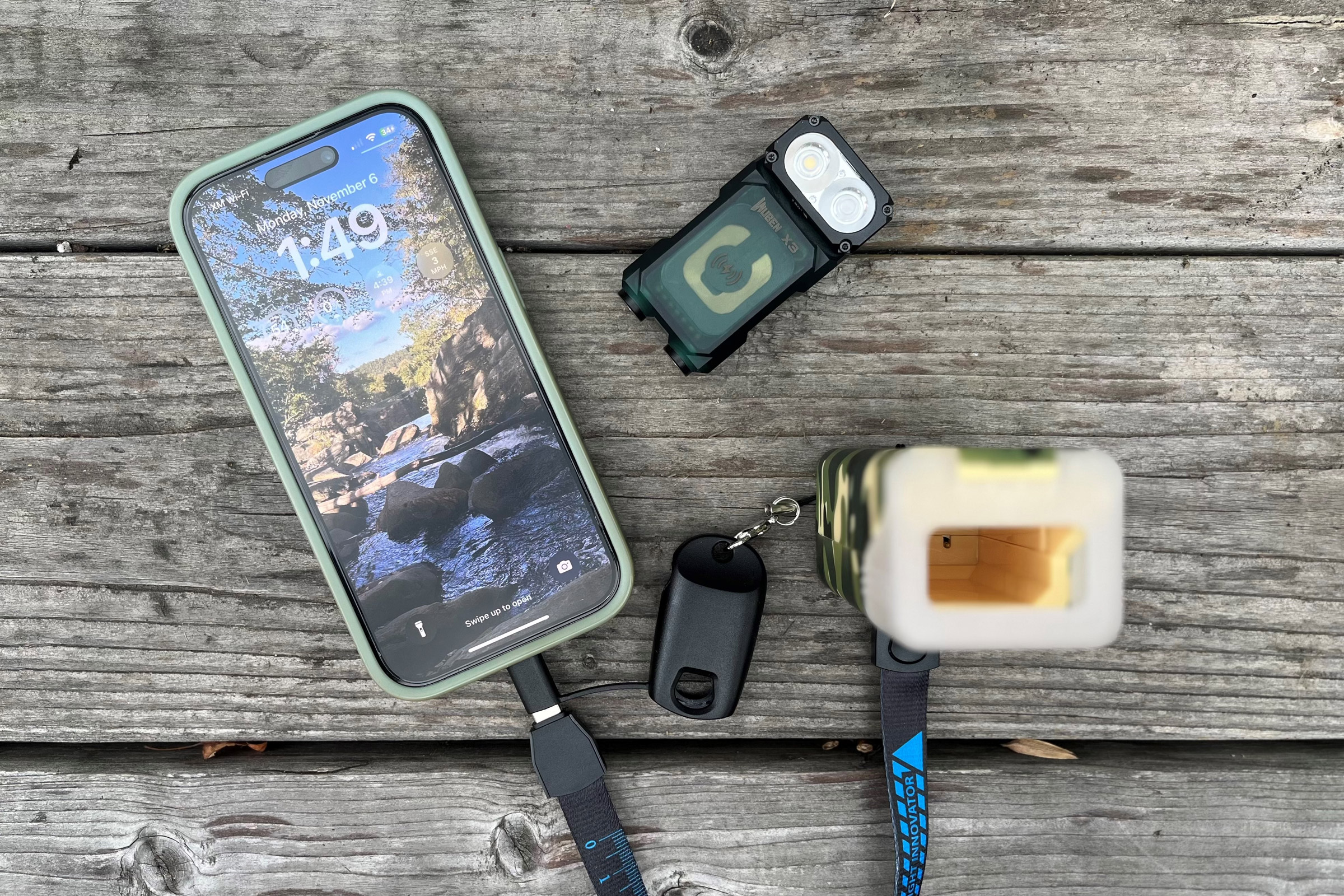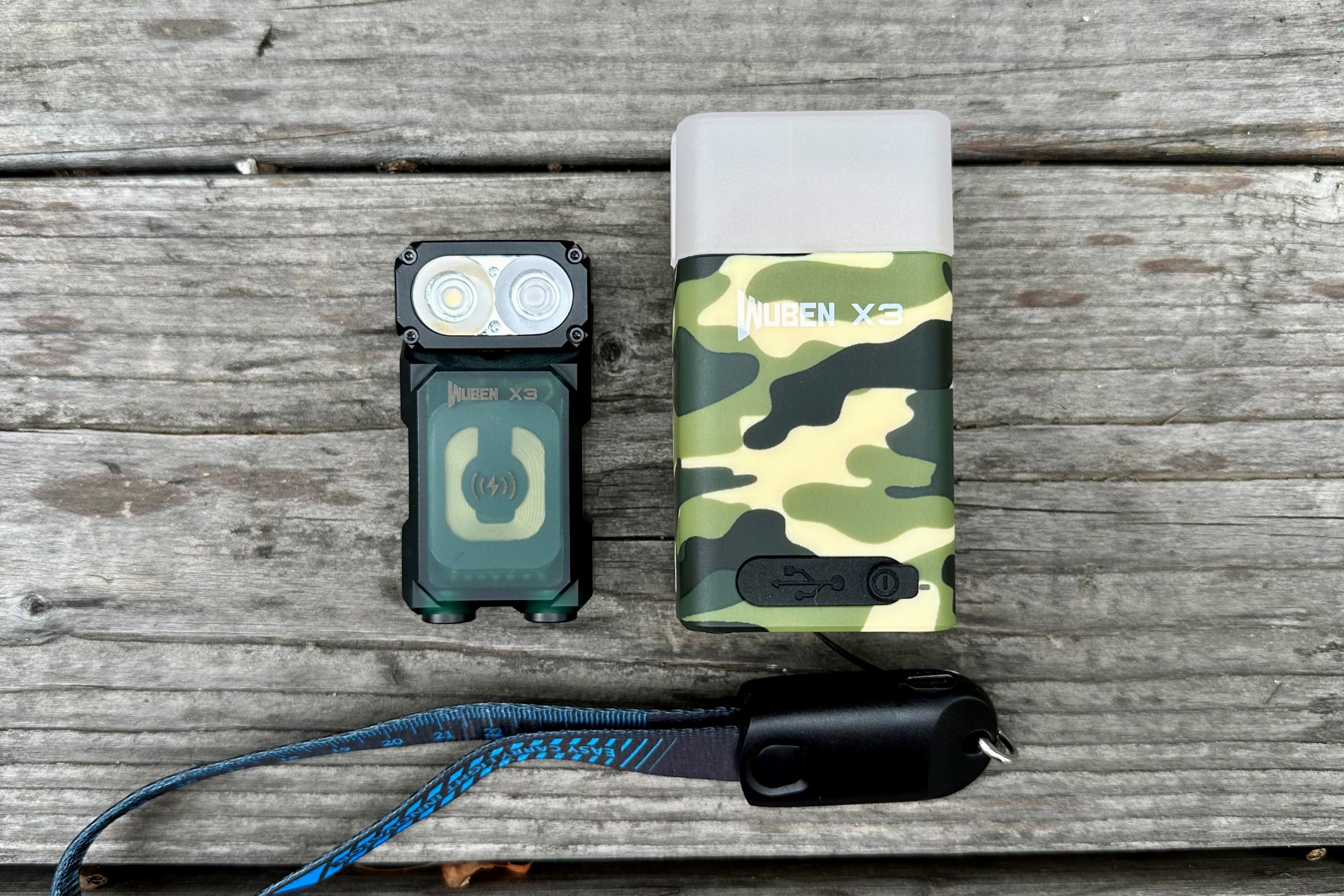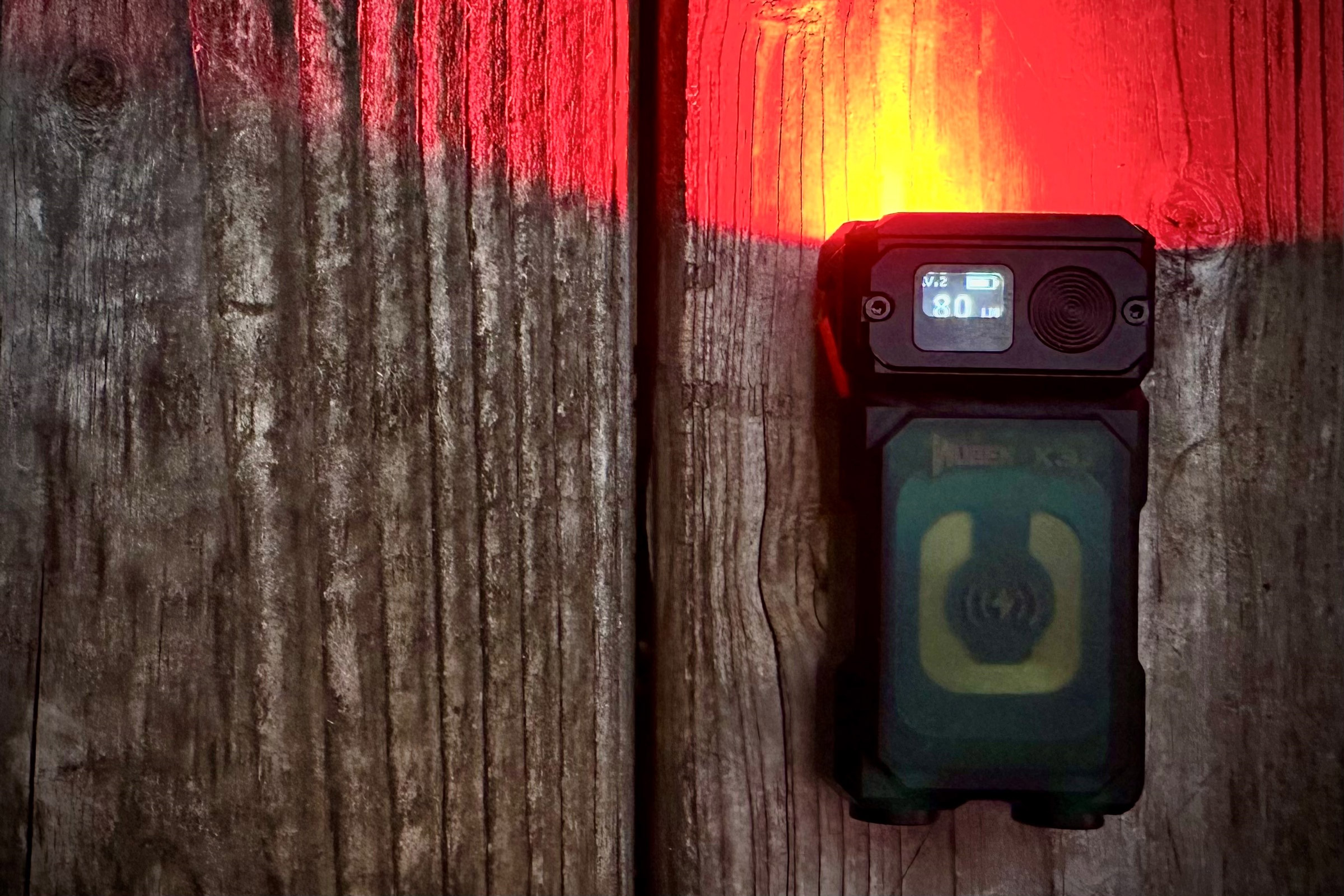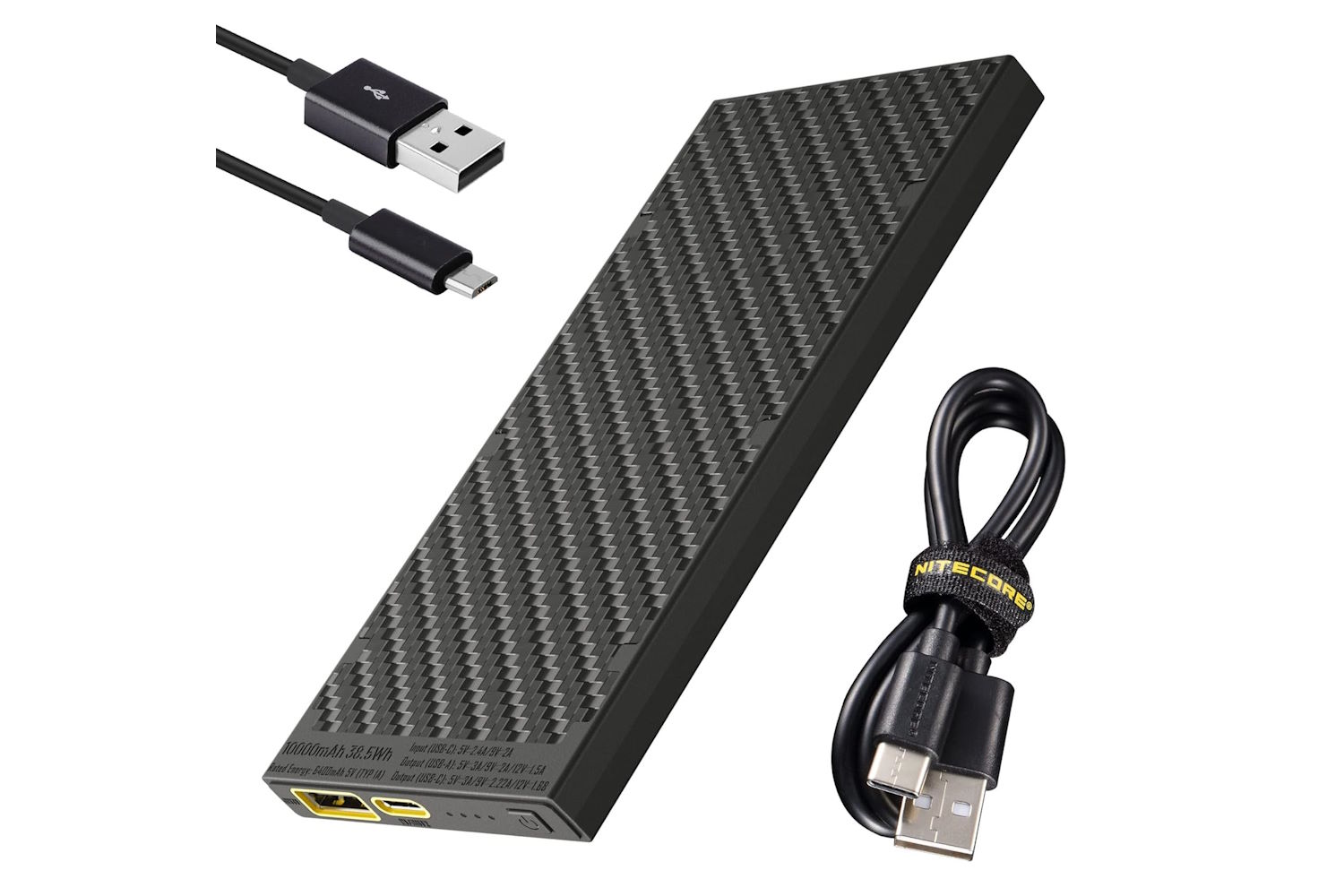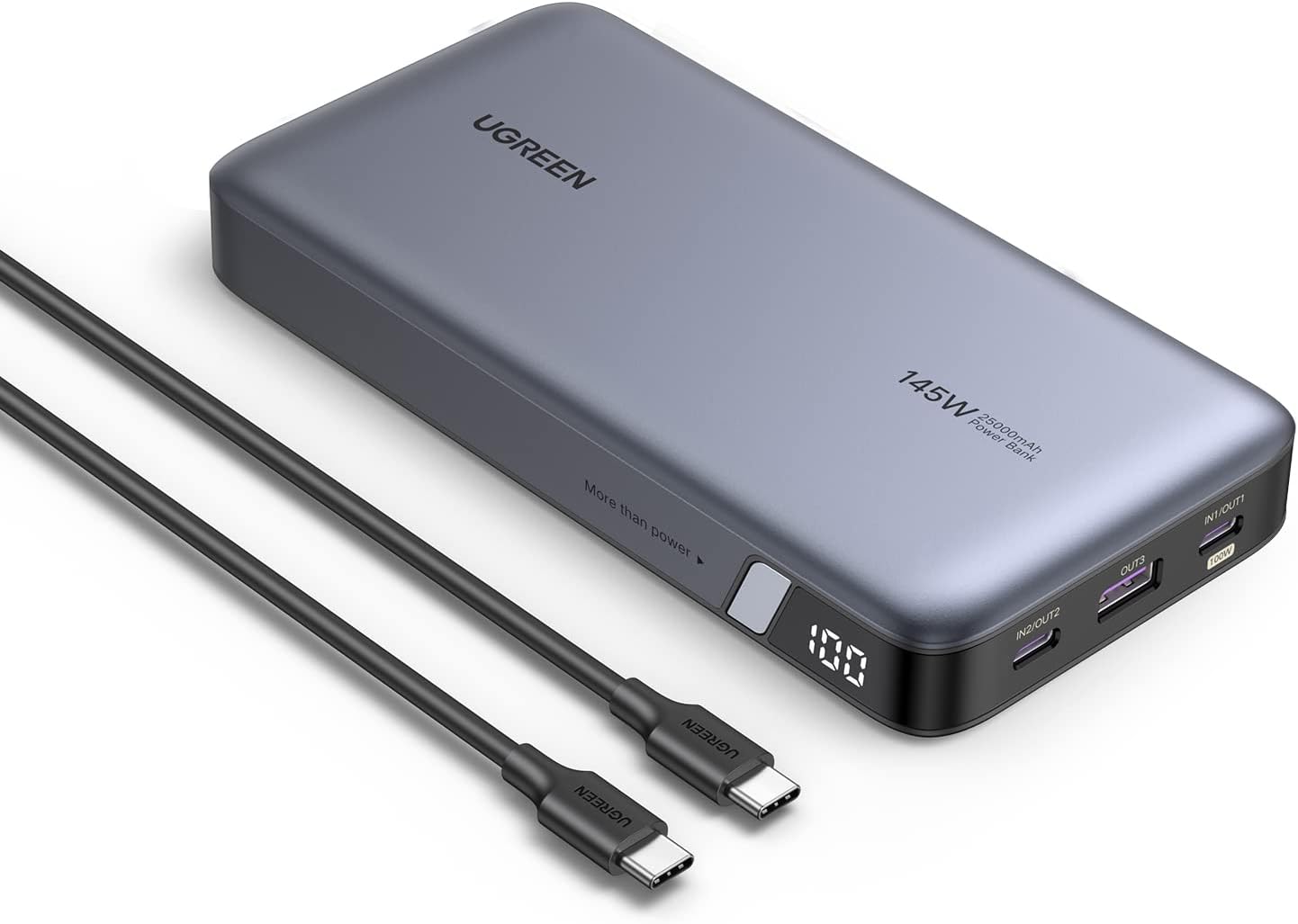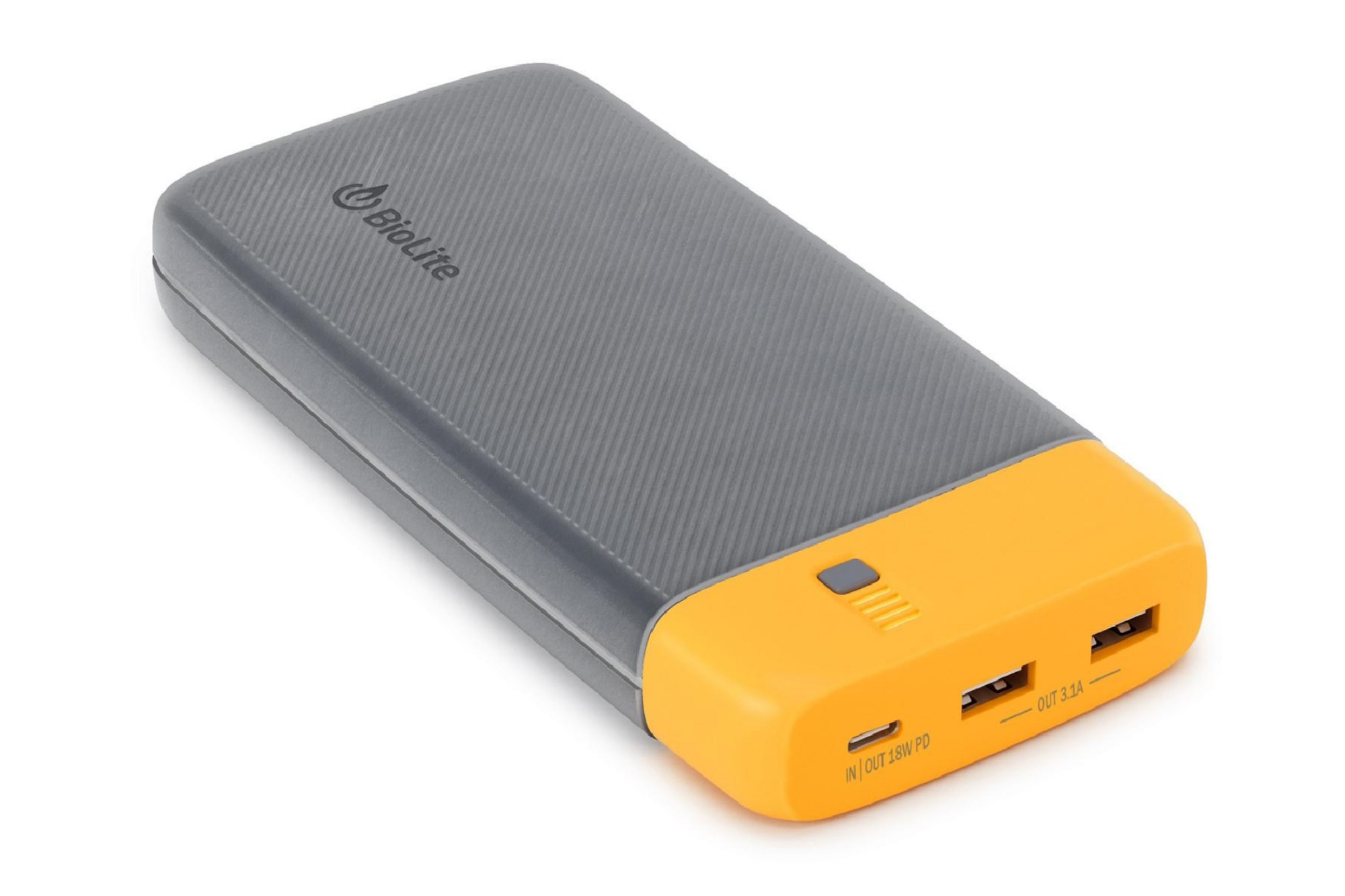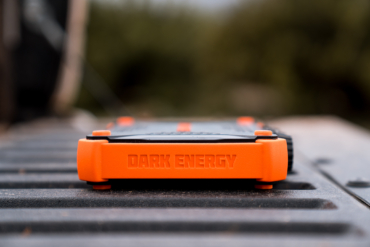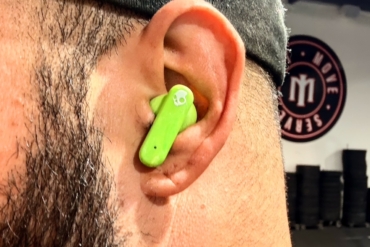Looking for convenient, on-the-go charging when you’re traveling or exploring? We tested today’s best power banks to keep your devices alive and your adventures going longer. With expanded capacities, faster speeds, and even wireless options, portable chargers have never been more capable or efficient.
Tech expert Nick LeFort and GearJunkie Editor, Chris Kassar scoured the market for the most popular, innovative, and well-regarded models, then put them through extensive testing at home, in the office, on vacation, and out in the field. We’ve drained and recharged dozens of units while powering phones, cameras, laptops, and more to see which are truly worth your pack space and your budget.
Our top overall pick, the Nestout 15,000mAh Outdoor Battery, impressed us with its versatility, rugged build, and useful features. For a wallet-friendly option, the Skullcandy Fat Stash 2 delivers surprisingly strong performance in a compact package. Whatever your needs, this guide highlights the best power banks you can buy right now.
Editor’s Note: On October 28, 2025, we updated our Power Banks guide by adding the high-capacity GOODaaa 36,000mAh Wireless Power Bank, a rugged option with solar backup and built-in cables, and the compact Anker PowerCore 10K, a lightweight everyday charger ideal for backcountry adventures and travel. We also included detailed ratings and refreshed our buying advice to make this guide even more helpful.
The Best Power Banks of 2025
Nestout 15000mAh Outdoor Battery
-
Value
8.0
-
Durability
9.5
-
Portability & Weight
7.5
-
Charging Performance
8.5
- Capacity: 15,000 mAh
- Weight: 13 oz
- Size: 5” x 3.3” x 1.4”
- Outputs: USB-A (2x), USB-C (1x)
- Inputs: USB-A (2x), USB-C (1x)
- Included cables: None
Pros
- Visually appealing
- Dual-function portable battery
- Built like a brick outhouse – rugged and durable
- Shockproof, dustproof, and waterproof
Cons
- Using light feature diminishes charging capacity
- Sold out from time to time
Skullcandy Fat Stash 2
-
Value
9.0
-
Durability
6.5
-
Portability & Weight
8.5
-
Charging Performance
7.0
- Capacity: 10,000 mAh
- Weight: 7.1 oz.
- Size: 4.2” x 2.5” x 0.87”
- Outputs: USB-A (2x), USB-C (1x)
- Inputs: USB-C PD (1x)
- Included cables: 6” USB-A to Micro-USB/USB-C
Pros
- Light and portable
- Included combo cable to increase adaptability
- The smallest power bank on the list with USB-C PD charging power
Cons
- Frequently sold out online
- Unsure if it has any protection from the elements built into it
BioLite Charge 100 Max
-
Value
7.5
-
Durability
9.0
-
Portability & Weight
6.8
-
Charging Performance
9.0
- Capacity: 25,000 mAh
- Weight: 1 lb 4 oz
- Size: 5.5” x 4.41” x 1.38”
- Outputs: USB-C PD (2x), USB-A (1x), USB-C (1x), 15W Wireless Pad (1x)
- Inputs: USB-C PD (1x)
- Included cables: 100W USB-C to USB-C PD cable
Pros
- Great balance between size and capacity with the added benefit of efficiency
- Can charge up to 5 devices at once
- Bi-directional charging for optimized charging and recharging
- Rugged construction with 1m drop rating
Cons
- Too much power and capability for simple charging needs
- Not waterproof/IP rated
Goal Zero Flip 24
-
Value
8.0
-
Durability
7.0
-
Portability & Weight
9.8
-
Charging Performance
6.0
- Capacity: 6,700 mAh
- Weight: 4.6 oz
- Size: 3.7 x 1.63 x 0.83"
- Outputs: USB-A (1x)
- Inputs: Built-in flip-out USB-A tip
- Included cables: None
Pros
- Light and portable
- Built-in USB tip adds utility
- Simple button-free interface
Cons
- Lacks USB-C output
Anker 313 Power Bank (PowerCore 10K)
-
Value
8.5
-
Durability
9.0
-
Portability & Weight
9.5
-
Charging Performance
8.0
- Capacity: 10,000 mAh
- Weight: 7.5 oz.
- Size: 5.9” x 2.7” x 0.57”
- Outputs: USB-A (1x), USB-C (1x)
- Inputs: Micro USB (1x), USB-C (1x)
- Included cables: USB-C to USB-C
Pros
- Slim and lightweight
- Capacity for 2-3 phone charges
- Charges quickly
- Durable build with overload and overcharge protection
Cons
- Only charges one device at a time
Nimble CHAMP Pro Portable Charger
-
Value
6.5
-
Durability
6.0
-
Portability & Weight
8.0
-
Charging Performance
8.5
- Capacity: 20,000 mAh
- Weight: 12.9 oz
- Size: 5.92” x 2.48” x 1”
- Outputs: USB-C (2x)
- Inputs: USB-C (2x)
- Included cables: 3ft USB-C to USB-C
Pros
- 65W output for 2 devices at once
- Carbon-neutral product
- Compact for capacity
- Wicked durable
Cons
- Doesn’t have official durability or waterproof ratings
- Doesn’t have pass-through charging
Other Power Banks That Get Us Charged Up
-
Value
8.5
-
Durability
8.5
-
Portability & Weight
6.5
-
Charging Performance
9.0
- Capacity: 36,000 mAh
- Weight: 15.2 oz
- Size: ”6.6"L x 3.5"W x 1.1"
- Outputs: USB A (1x), USB C (1x),
- Inputs: iOS (1x), USB-C (1x)
- Included cables: 3 output cables ( Type C*1 & iOS*1 & Micro USB*1) and 1 USB-A input cable.
Pros
- Massive capacity means 6–8 phone charges
- Six outputs with built-in cables and wireless charging
- 15W fast charging + three input options, including solar
- Dual flashlights and a carabiner add outdoor utility
Cons
- Bulky and heavy for everyday pocket carry
- Cables are too short
- Solar charging is slow and works best as a backup only
-
Value
8.0
-
Durability
8.3
-
Portability & Weight
8.5
-
Charging Performance
7.0
- Capacity: 5,000 mAh
- Weight: 6.4 oz.
- Size: 4.1 x 3.2” x 1.3”
- Outputs: USB-C (1x)
- Inputs: USB-C (1x)
- Included cables: 1x USB-C to USB-C
Pros
- Durable
- Easy to access
- Innovative
- IP4-rated for shock, dust, and water resistance
Cons
- USB-C port cover doesn’t stay in place
-
Value
6.0
-
Durability
9.0
-
Portability & Weight
7.0
-
Charging Performance
8.0
- Capacity: 10,200 mAh
- Weight: 9.6 oz
- Size: 6” x 3.25” x 0.63”
- Outputs: USB-C (1x), USB-A (1x)
- Inputs: USB-C (1x)
- Included cables: 3’ USB-C to USB-C cable
Pros
- Extremely durable
- Built for extreme conditions
- Waterproof and fully submersible
Cons
- Heavier than other batteries of similar capacity
-
Value
8.5
-
Durability
7.0
-
Portability & Weight
9.0
-
Charging Performance
6.5
- Capacity: 5,000 mAh
- Weight: 6.7 oz
- Size: 4.09” x 2.8” x .32”
- Outputs: Wireless charging via magnetic connection
- Inputs: USB-C (1x)
- Included cables: USB-C to USB-C cable
Pros
- Portable and cable free
- Fully recharges an iPhone
- Inexpensive
Cons
- Only works with MagSafe compatible smartphones
-
Value
6.0
-
Durability
7.4
-
Portability & Weight
8.0
-
Charging Performance
6.0
- Capacity: 3,000 mAh
- Weight: 5.9 oz
- Size: 3.35” x 1.85” x 1.57”
- Outputs: USB-C (1x)
- Inputs: USB-C (1x)
- Included cables: USB-C to USB-C charging cable lanyard
Pros
- Its main feature is a flashlight
- Fully recharges an iPhone
- The charging cable doubles as a lanyard
Cons
- Will require a different cable or USB-C adapter for older devices
-
Value
8.5
-
Durability
7.5
-
Portability & Weight
7.0
-
Charging Performance
7.9
- Capacity: 10,000 mAh
- Weight: 5.29 oz
- Size: 4.8 x 2.32 x 0.42"
- Inputs: USB-C
- Outputs: USB-A (1x), USB-C (1x)
- Included cables: USB-C to USB-C
Pros
- Impact-resistant and generally durable
- Lightweight with a thin profile
- Charges quickly
- Low-power setting for sensitive devices
Cons
- Imprecise battery life indicator lights
-
Value
6.5
-
Durability
9.0
-
Portability & Weight
5.0
-
Charging Performance
9.0
- Capacity: 25,600 mAh
- Weight: 1.5 lbs.
- Size: 7.7 x 3.81 x 1"
- Outputs: Wireless, USB-C (1x)
- Inputs: USB-A (2x), USB-C (1x)
- Included cables: 39" USC-C to USB-C cable
Pros
- Powerful enough for charging laptops and tablets
- Durable casing
- Wireless charging
Cons
- Heavy
-
Value
8.0
-
Durability
6.0
-
Portability & Weight
6.0
-
Charging Performance
8.5
- Capacity: 25,000mAh
- Weight: 1 lb., 2 oz.
- Size: 6.3 x 32. 1.1"
- Output: USB-C (2x), USB-A (1x)
- Input: USB-C
- Included cables: 1 x 100W USB-C to USB-C Cable
Pros
- Excellent value
- Charges devices quickly
- Easy-to-read LED indicator
Cons
- A bit heavy and clunky
-
Value
7.0
-
Durability
5.0
-
Portability & Weight
7.5
-
Charging Performance
6.0
- Capcity: 10,000 mAh
- Weight: 8.1 oz
- Size: 5.55 x 2.87 x 0.64"
- Output: USB-C (1x), USB-A (1x)
- Input: USB-C (1)
- Included cables: USB-A to USB-C
Pros
- Accurate battery indicator lights
- Handsome design
Cons
- Only two ports
- Standard modern charging speeds despite the "Fast Charge" name
-
Value
7.0
-
Durability
8.5
-
Portability & Weight
6.8
-
Charging Performance
9.0
- Capacity: 20,000 mAh
- Weight: 16.4 oz
- Size: 6.7 x 3.2 x 1"
- Output: USB-C (1x), USB-A (2x)
- Input: USB-C (1x)
- Included cables: USB-A to USB-C
Pros
- Great power-to-weight ratio
- Durable plastic shell
- Fast charging capabilities
Cons
- Battery indicator is not super precise
- Battery indicator doesn't turn off while charging
Power Bank Comparison Chart
| Power Bank | Price | Capacity | Weight | Size | Outputs |
|---|---|---|---|---|---|
| Nestout 15,000mAh Outdoor Battery | $60 | 15,000 mAh | 13 oz. | 5” x 3.3” x 1.4” | USB-A (2x), USB-C (1x) |
| Skullcandy Fat Stash 2 | $42 | 10,000 mAh | 7.1 oz | 4.2” x 2.5” x 0.87” | USB-A (2x), USB-C (1x) |
| BioLite Charge 100 Max | $180 | 25,000 mAh | 1 lb., 4 oz. | 5.5” x 4.41” x 1.38” | USB-C PD (2x), USB-A (1x), USB-C (1x), 15W Wireless Pad (1x) |
| Goal Zero Flip 24 | $30 | 6,700 mAh | 4.6 oz. | 3.7″ x 1.6″ x 0.8″ | USB-A USB-A |
| Anker 313 Power Bank (PowerCore 10K) | $26 | 10,000 mAh | 7.5 oz. | 5.9” x 2.7” x 0.57” | USB-A (1x), USB-C (1x) |
| Nimble CHAMP Pro Portable Charger | $100 | 20,000 mAh | 12.9 oz | 5.92” x 2.48” x 1” | USB-C (2x) |
| GOODaaa Power Bank Wireless Charger 36,000 mAh | $40 | 36,000 mAh | 15.2 oz | 6.6″L x 3.5″W x 1.1″ | USB A (1x), USB C (1x) |
| Nestout Carabiner Battery 5000mAh | $45 | 50000 mAH | 6.4 oz | 4.1 x 3.2” x 1.3” | USB-C (1x) |
| Dark Energy Poseidon Pro 10200 | $120 | 10,000 mAh | 9.6 oz. | 6.0″ x 3.3″ x 0.6″ | USB-C (1x), USB-A (1x) |
| Hinovo Magnetic Charger | $40 | 5,000 mAh | 4.5 oz. | 4.1″ x 2.8“ x 0.4″ | Wireless charging |
| Wuben Lightok X3 Owl EDC Flashlight | $79 | 3,000 mAh | 5.9 oz. | 3.35” x 1.85” x 1.57” | USB-C (1x) |
| Nitecore NB10000 Gen II | $60 | 10,000 mAh | 5.3 oz. | 4.8″ x 2.3″ x 0.4″ | 1x USB-A, 1x USB-C |
| Goal Zero Sherpa 100PD | $100 | 25,600 mAh | 24.0 oz. | 7.7″ x 3.8″ x 1.0″ | Wireless charging pad, USB-C (1x) |
| UGREEN Power Bank | $100 | 25,000 mAh | 18.1 oz. | 6.3 x 32. 1.1″ | USB-C (2x), USB-A (1x) |
| Otterbox Fast Charge | $48 | 10,000 mAh | 8.1 oz. | 5.6″ x 2.9″ x 0.6″ | USB-C (1x), USB-A (1x) |
| BioLite Charge 80 PD | $100 | 20,000 mAh | 16.4 oz. | 6.7″ x 3.2″ x 1.0″ | USB-C (1x), USB-A (2x) |
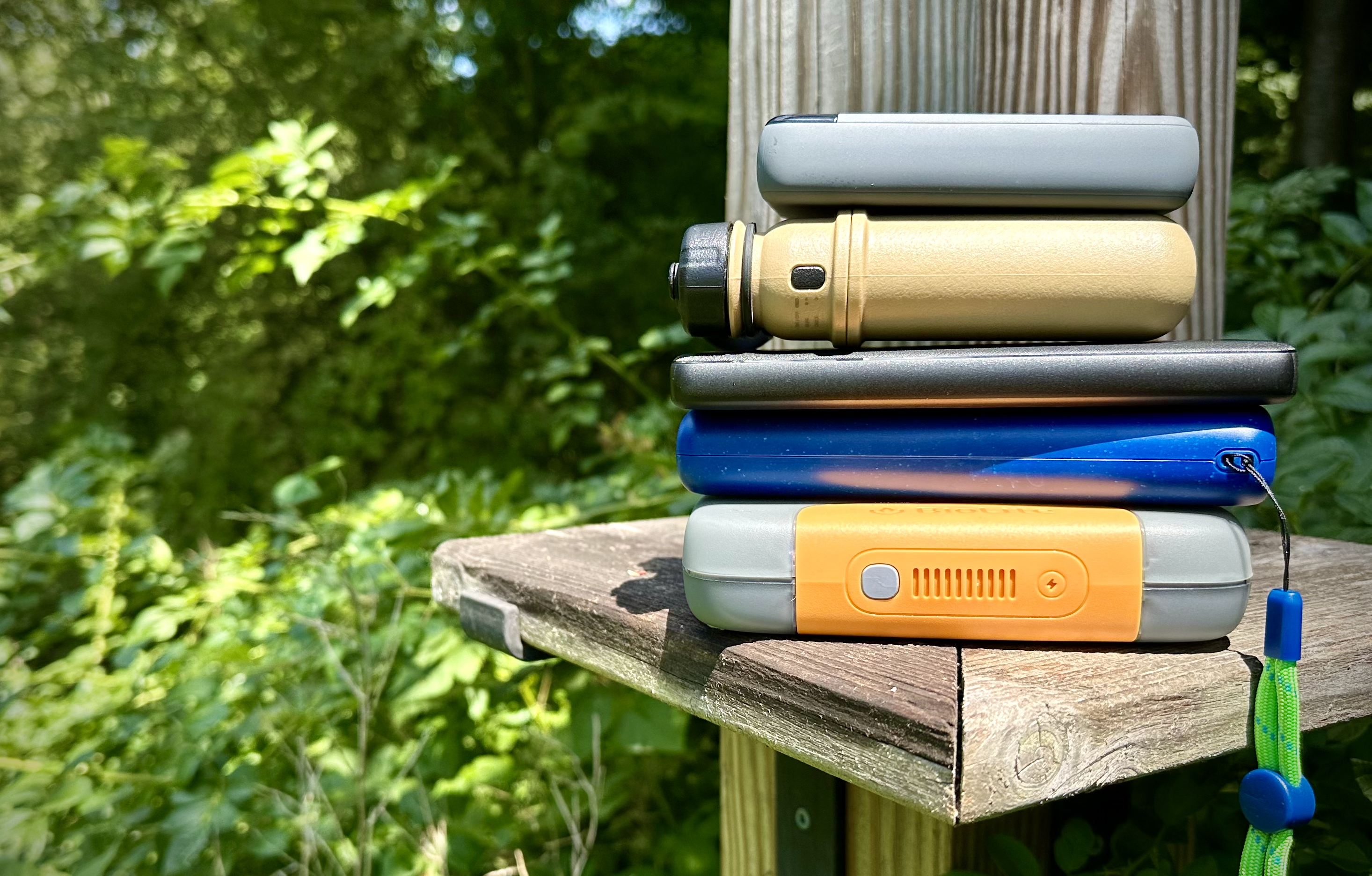
How We Tested Power Banks
Our Expert Testers
We tested all the power banks on this list thoroughly in daily life, outdoors adventuring, and even some travel. Our three testers, Nick LeFort, Katie Davis, and Austin Beck-Doss, admit they didn’t use a wall outlet for any of their electronics for the duration of these tests.
Lead tester Nick LeFort has been writing for over 30 years but has spent 10 years writing professionally about gear, knives and tools, off-roading, overlanding, and outdoor living. He took the assignment one step further and let his two daughters use the power banks he was testing.
Not only are kids tough on darn near everything they get their hands on, but they are also perpetually charging their smartphones and tablets. In his mind, they were going to use and abuse these products well beyond anything he had planned.
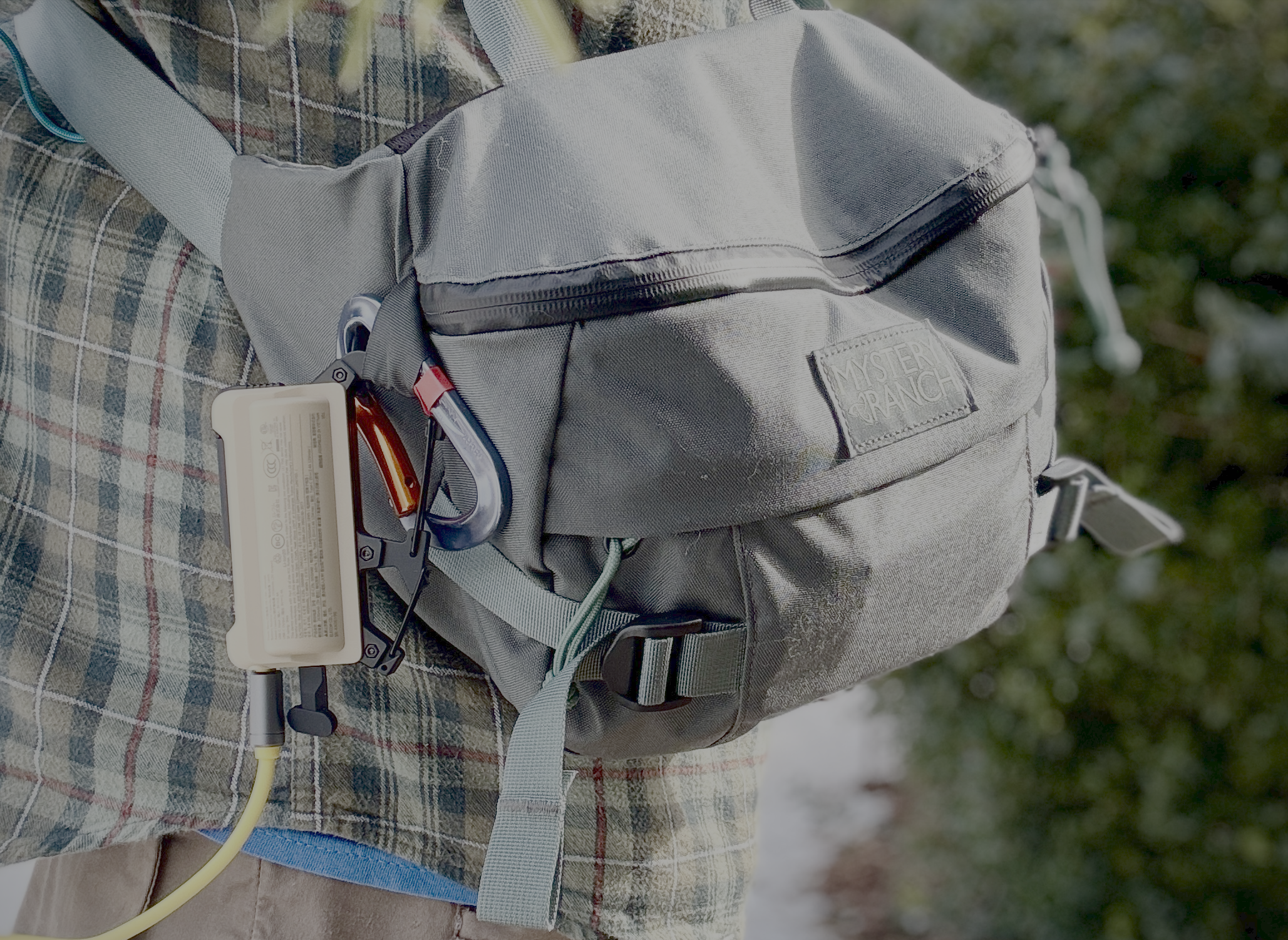
Our Testing Process
Power bank manufacturers make some exaggerated claims about the capacity, performance, and durability of their products. After noting the specifications of each power bank, our testers took them to task. As a baseline, we fully charged every power bank right out of the box. Then, we set them up to see how many times they could charge an iPhone before depleting their internal battery.
We split our durability test between prolonged regular use indoors and outdoors and a standardized drop test. Each power bank was dropped exactly 2 feet onto concrete to simulate the classic fumble when our hands stopped doing what our brains told them. It happens. Don’t deny it. The power banks that didn’t pass this test didn’t make it on this list.
Regarding waterproofing — or at least water resistance — if the manufacturer claimed its power bank was designed to meet a specific rating, we tested it. However, it wasn’t a universal test because most power banks aren’t rated to get wet and definitely not to be submerged.
Between Nick, Katie, and Austin, we vetted 40 different power banks. It was a massive undertaking as no two power banks are built the same. During testing, patterns emerged that told us which power bank should be more durable. In some cases, based on the inputs and outputs alone, we determined which power banks would make it past the first round of testing because they indicated a higher efficiency level.
That being said, you can rest assured that this list’s power banks are the best and the most current. With technology always evolving in the world of electronics, it’s important for us to revisit and refresh this list from time to time to make sure we’re showing you the cream of the crop right from the start.
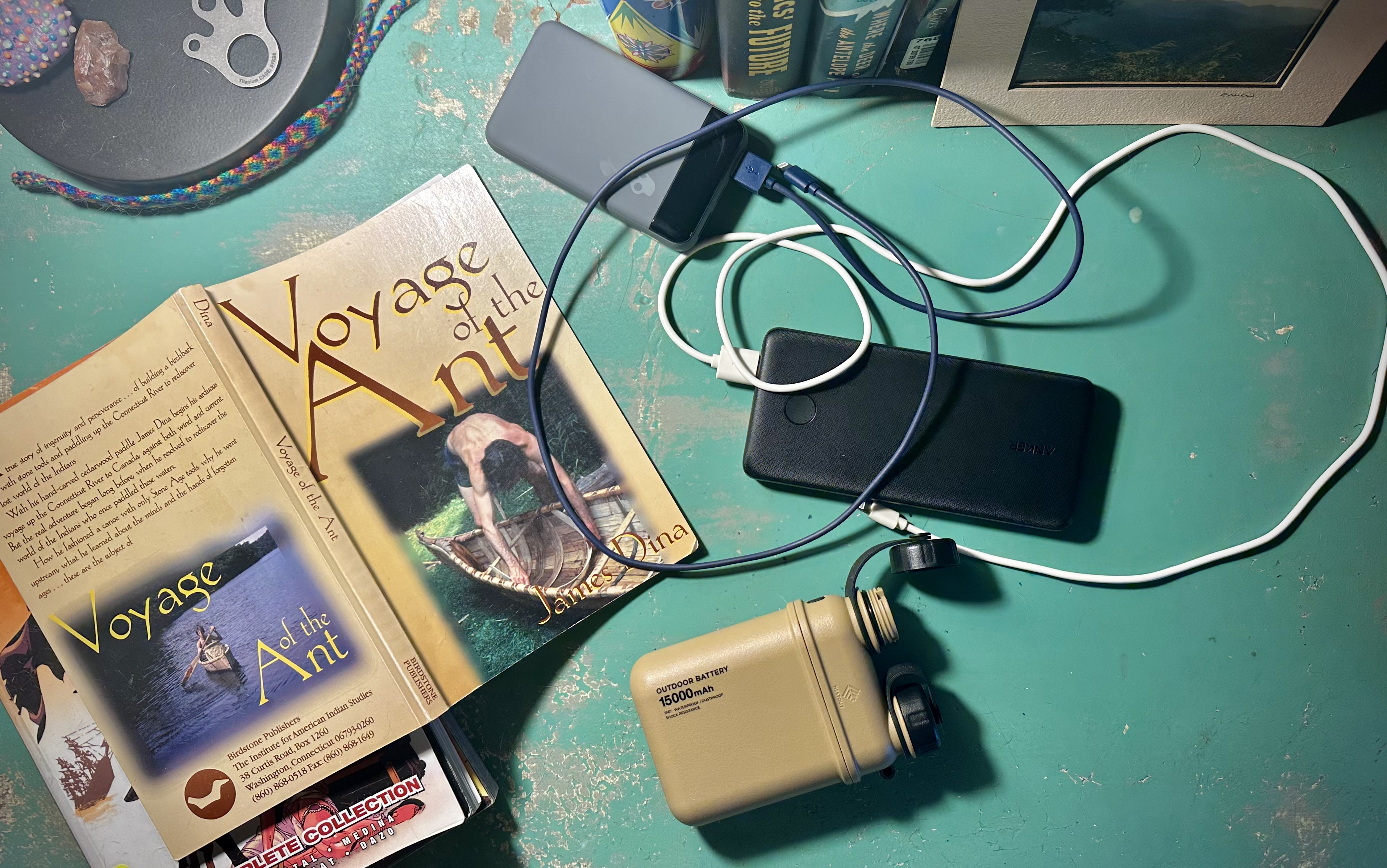
Our Power Bank Rating System
Each power bank in this guide was tested and scored in four main categories: Value, Durability, Portability & Weight, and Charging Performance.
Value considers how well a model performs for its price, factoring in capacity, features, and brand reliability. A budget-friendly option can score high here if it delivers strong performance for the cost.
Durability looks at build quality and reliability over time, including materials, ruggedness, resistance to drops, and whether safety systems (like overload or short-circuit protection) hold up in real-world use.
Portability & Weight measures how easy the power bank is to carry on daily or extended trips. Slim, lightweight chargers get top marks, while bulkier, high-capacity models score lower, even though they’re great for camping or emergencies.
Charging Performance evaluates output speed (fast charging protocols like PD or wireless), input speed (how quickly the power bank itself recharges), and the ability to charge multiple devices efficiently.
The overall score is not a simple average of these categories. Instead, it reflects our editorial judgment based on the complete user experience. That means a heavy-duty bank with lower portability can still score high overall if it excels in capacity and reliability, while a super-compact model might rank higher for everyday use even if it sacrifices raw power.

Buyer’s Guide: How to Choose a Power Bank
Modern life runs on portable electronics, and dead batteries aren’t an option. Power banks provide a reliable power reserve: compact, rechargeable units that keep phones, laptops, and tablets running when outlets are out of reach. Power banks range from tiny keychain models to 25-pound monsters.
For this guide, we focused on the most useful category: personal-use portable banks. These weigh under 2 pounds and slip easily into a backpack. We cover everything that matters: capacity, charge times, inputs and outputs, solar options, and more. The goal is simple — help you pick the right power bank for everyday use.
What Is a Power Bank?
At its core, a power bank is a rechargeable battery you can carry anywhere. Think of it as a portable wall outlet: plug in your phone, tablet, or laptop with a USB-A or USB-C cable and recharge on the go.
Just like truckers keep spare fuel cans, a power bank is your backup supply — extra energy when your main source runs out of fuel on board.

Size and Capacity
Power banks come in all shapes and sizes—from tiny keychain backups good for a quick boost, to massive bricks that can recharge laptops, and even power an EV in a pinch. For most people, the sweet spot is somewhere in between.
Capacity is measured in milliamp hours (mAh), which indicates how many milliamps of current a power bank can deliver per hour. Anything below 5,000 mAh is best left for emergencies, as it won’t fully charge most modern smartphones. Today, the most common size is 10,000 mAh, which typically recharges a smartphone two to three times. Models like the Nestout 5000mAh Carabiner Battery can still handle a full charge and a half. Larger units such as the Nestout 15,000 mAh or Dark Energy Poseidon Pro 10,200 mAh stretch that endurance even further, delivering three to four charges in rugged, weather-resistant builds.
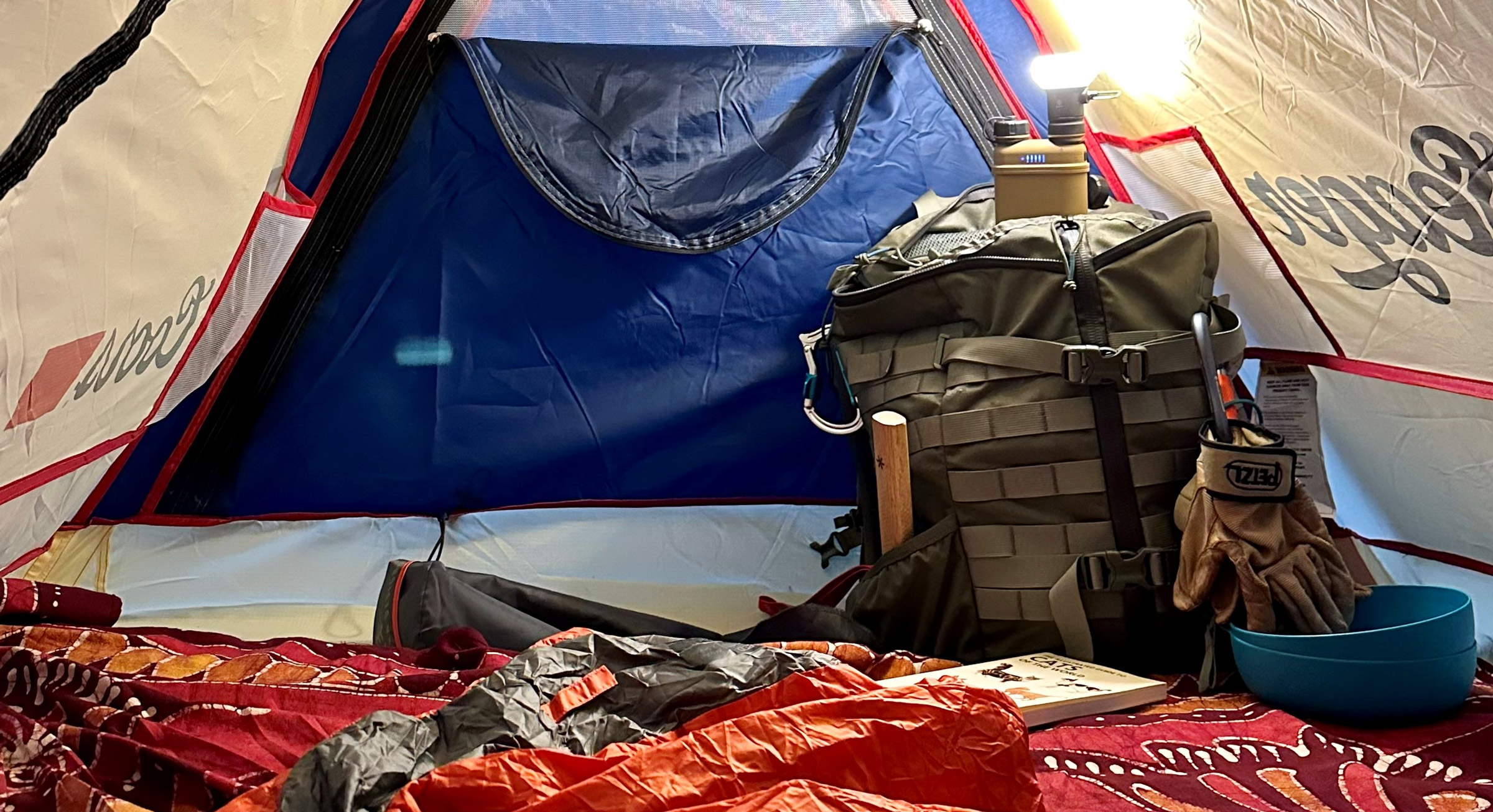
For longer trips, stepping up to 20,000–25,000 mAh offers serious utility. These power banks are heavier (around a pound) and closer to the size of a small tablet, but they can fully recharge a phone six or more times and often power multiple devices simultaneously. They’re ideal for multi-day backpacking or base camps. Models like the BioLite Charge 100 Max (25,000 mAh) can even handle laptops, while the Nimble CHAMP Pro Portable Charger (20,000 mAh) is better suited to tablets and larger devices.

‘Fast Charging’ Basics
The best power banks store and release energy quickly. Paired with the right cable, every model on this list delivers strong performance.
“Fast charging” isn’t universal. Every phone, power bank, and cable has its own wattage limits. A system only charges as fast as its weakest link. For example, early iPhones shipped with 5W adapters that took over 2 hours to charge. In contrast, the Nestout 15,000mAh Outdoor Battery pushes 32W, topping off an iPhone 14 Pro in about an hour.
In general, anything above 15W can be considered fast charging. But be careful: too much power can damage small devices like earbuds or watches. Some power banks, like the OtterBox Fast Charge, automatically reduce output to protect fragile batteries. The best products are quick to store power and equally quick to dispense it. Combined with the appropriate modern charging cable, all of the power banks on this list perform well in this aspect.
Power Delivery (PD)
“PD” is the new standard for power output. Most power banks deliver 15–25W, a sweet spot for speed and efficiency. Larger models like the BioLite Charge 100 Max reach up to 100W — enough for laptops and multiple devices at once.
We tested the BioLite across road trips, mountain stays, and daily use, and it consistently powered multiple devices without issue.
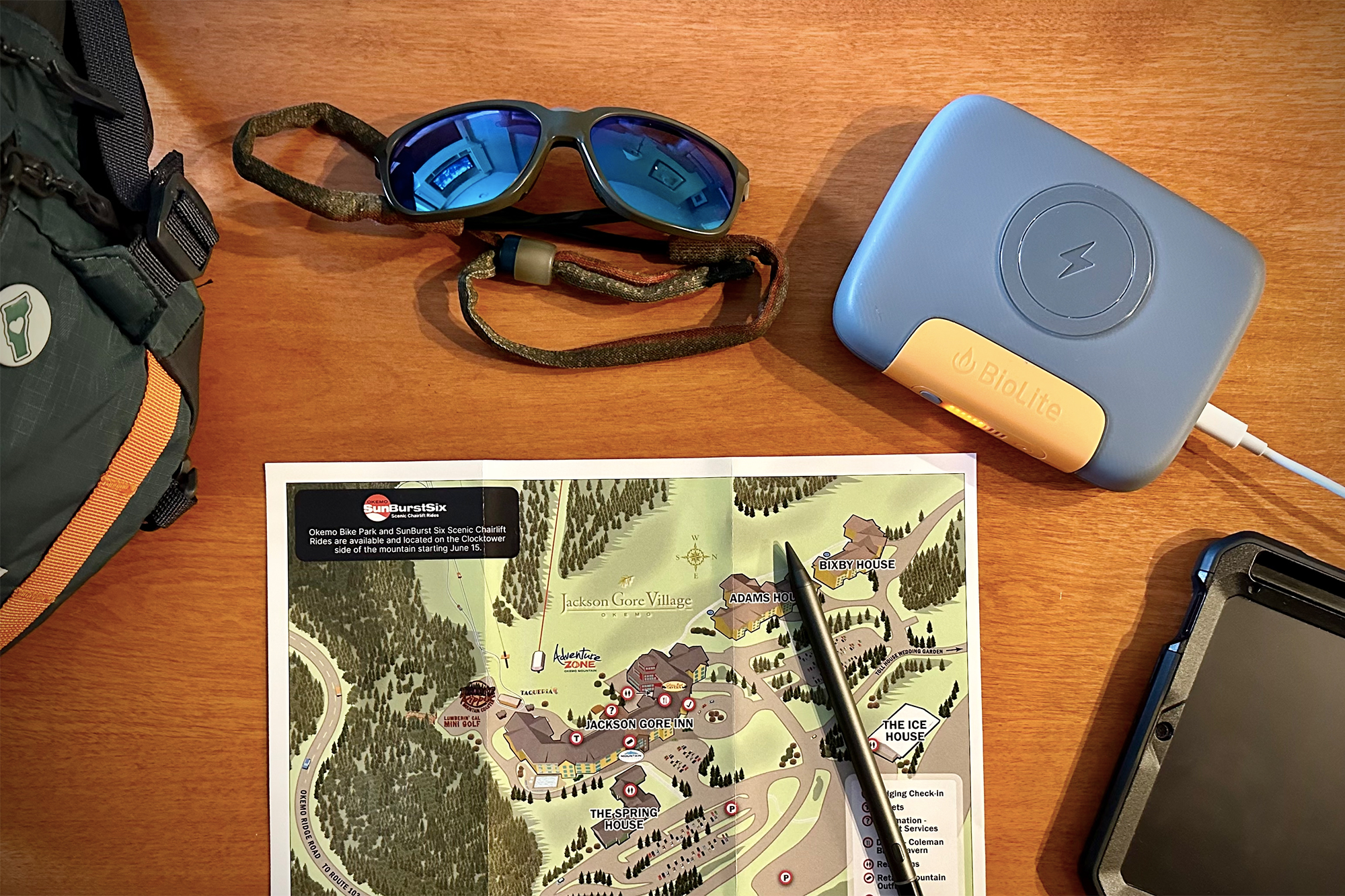
Power Cables
The cable matters as much as the battery. A cheap $5 gas station cord won’t unlock a power bank’s potential. For instance, Apple’s standard USB-A to Lightning cable caps at 9W — slow by modern standards. High-capacity USB-C PD cables (often rated up to 100W) are now widely available and affordable. To maximize performance, pair your power bank with a proper USB-C PD cable. Some banks like the GOODaaa Power Bank Wireless Charger 36,000mAh come with multiple cables already attached, so you’re never caught out without a cable.
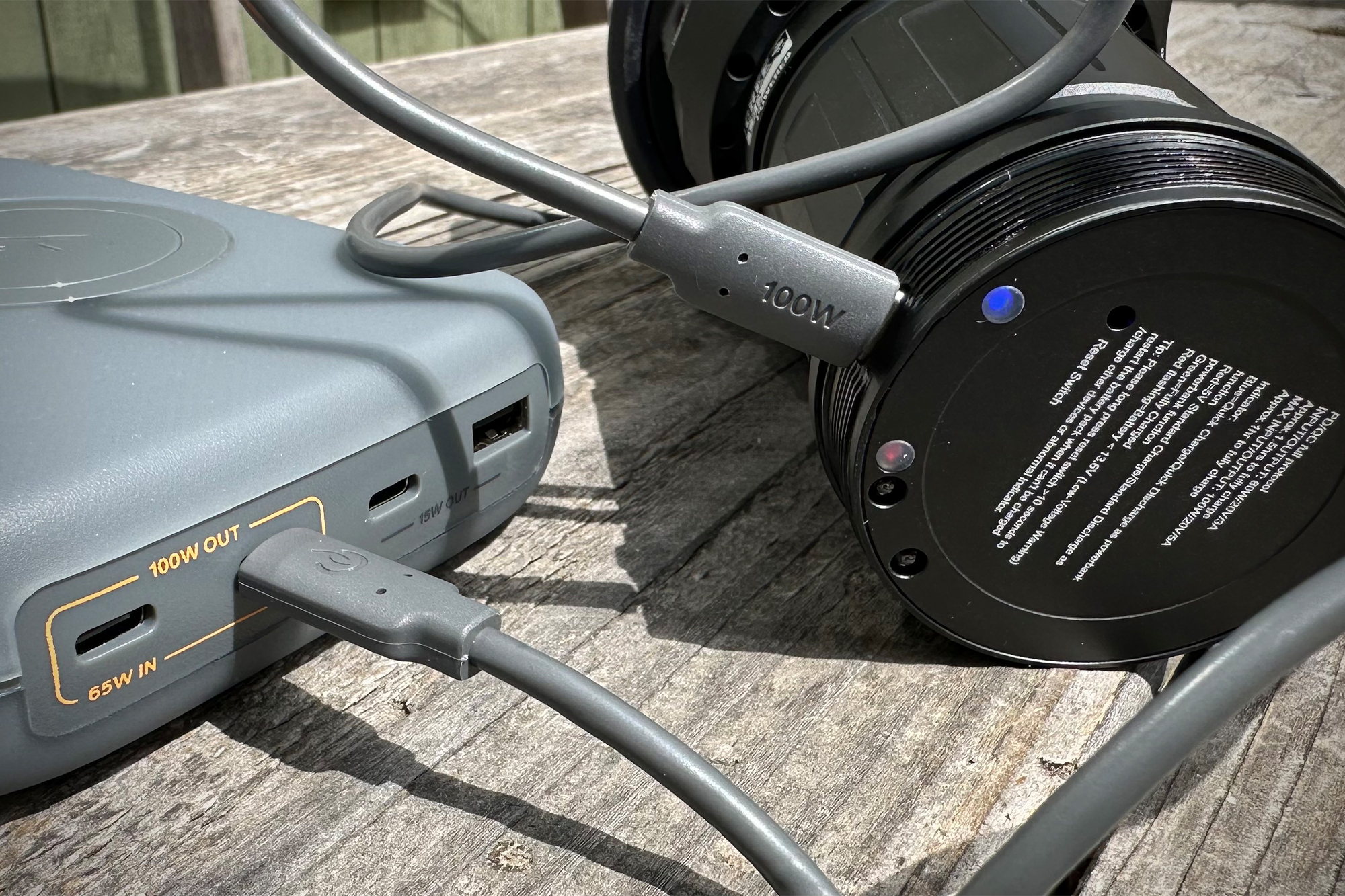
Ports & Compatibility
Most devices today use Micro-USB, USB-A, or USB-C. Micro-USB is fading, but still appears on budget banks. USB-A remains common, while USB-C is now the global standard for fast charging. USB-A ports are typically used as outputs, though some small products, such as the Goal Zero Flip 24, do have USB-A inputs, which eliminate the need for a charging cable.
Some models, like the Anker PowerCore and the Skullcandy Fat Stash 2, offer multiple options: two USB-A outputs, one USB-C, plus a combo cable. A few banks even include full AC outlets — handy for laptops, air mattresses, or even blenders. Though these are less common on power banks (and really common on Power Stations)
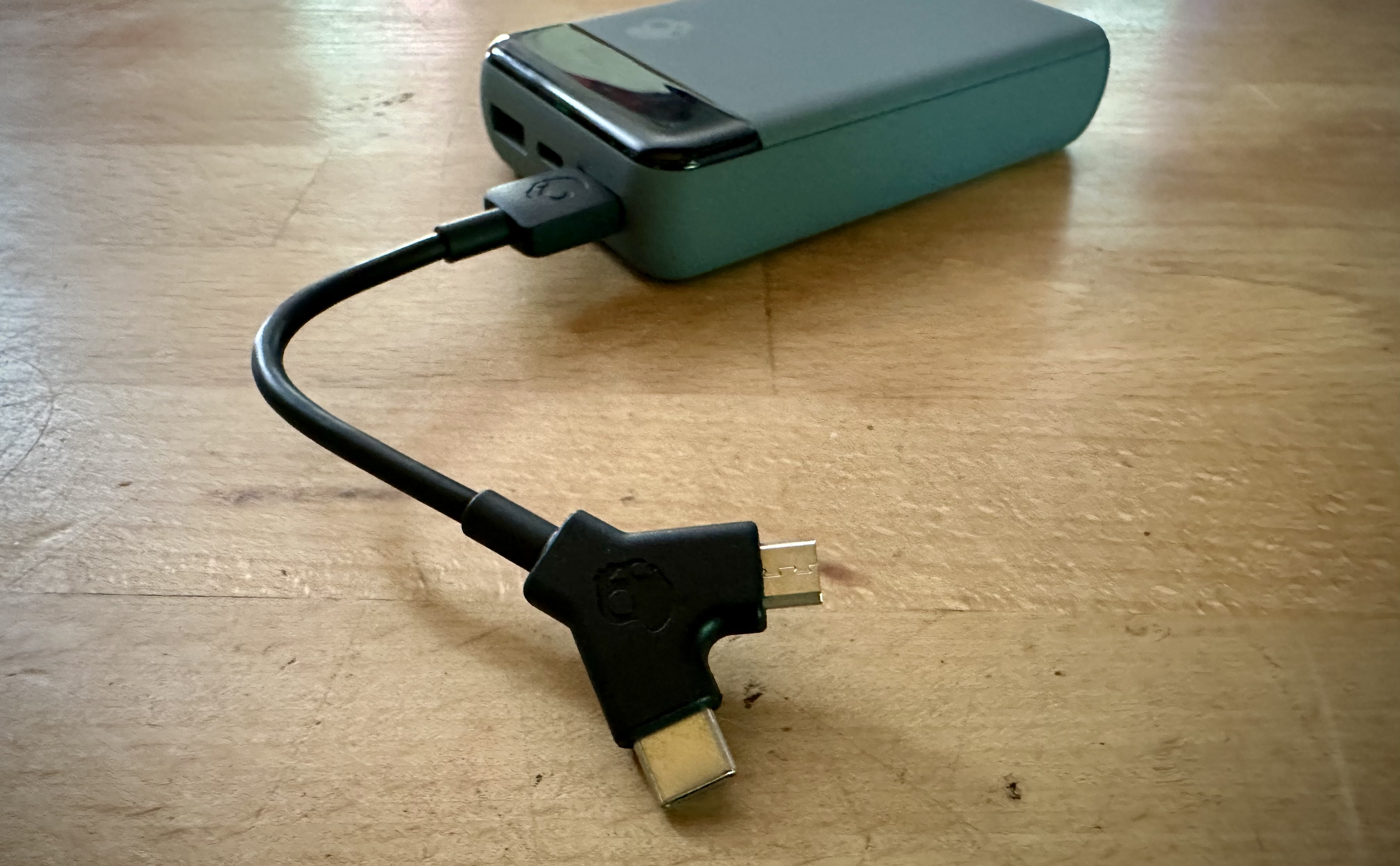
Wireless & Magnetic Charging
Some larger banks, like the BioLite Charge 100 Max and Goal Zero Sherpa 100 PD, offer 15W wireless charging. It’s slower than wired charging but adds convenience. Magnetic chargers, such as the Hinovo Magnetic Charger, attach directly to your phone. They’re compact and usually provide just one full recharge, which is perfect for travel or daily use.
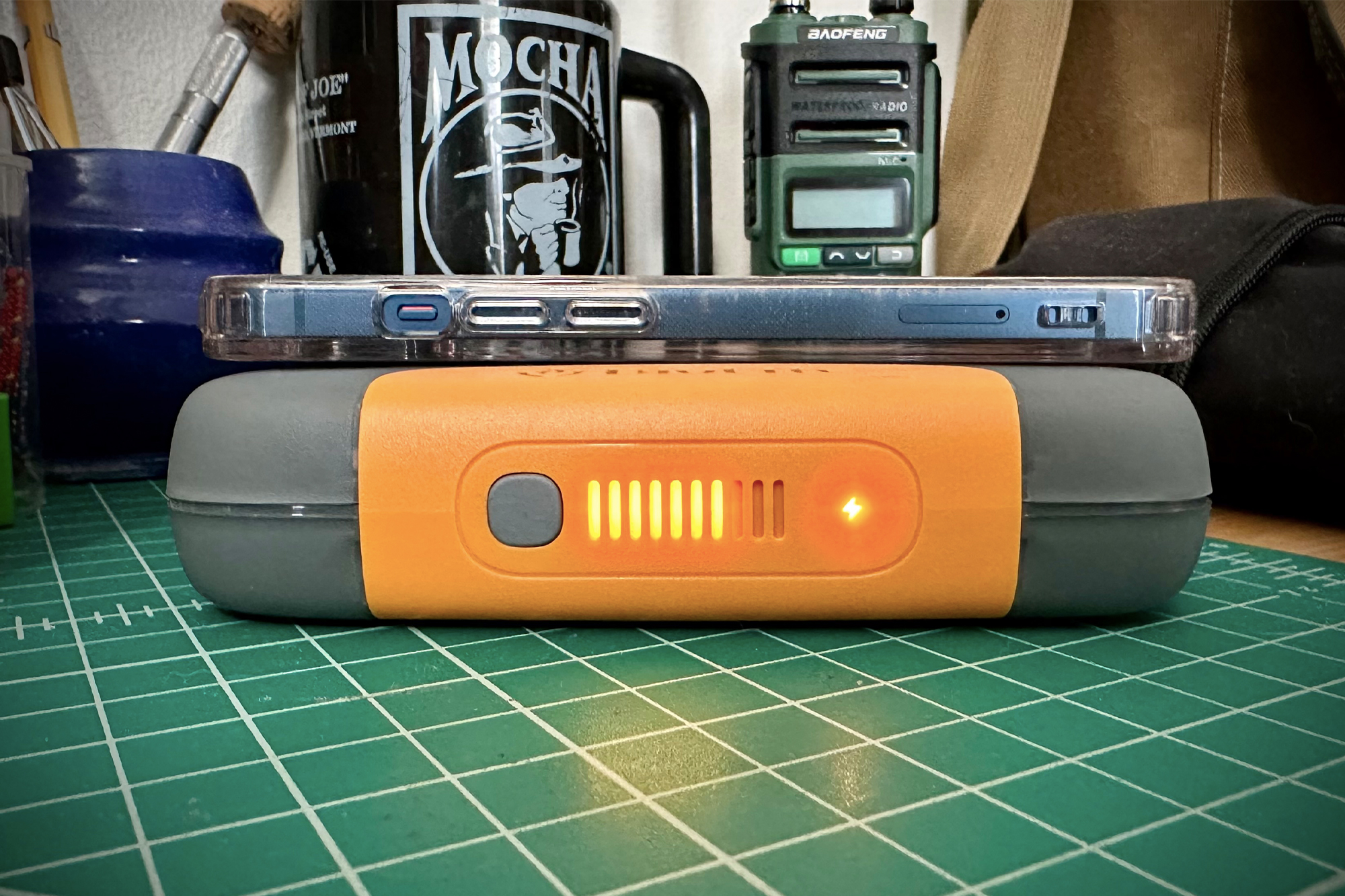
Pass-Through Charging
Pass-through charging lets a power bank charge itself and your devices at the same time. It’s a lifesaver when you’re short on outlets. Many of our top picks, including the Nestout 15,000mAh Outdoor Battery, support this feature.
Durability
Durability is a major factor in how brands design products for our use and abuse. Every power bank on this list passed our standardized drop-testing onto concrete from 2 feet. Most of them carry ratings that will protect the power bank from taller heights.
This type of rating is important because accidents happen. Even if you’re carrying something in a sling pack, if you drop that pack, it could impact the power bank inside. Our top pick for kids, the Nimble CHAMP Pro Portable Charger, even stood up to some extreme abuse from our two young daughters; this should speak to its durability.
Waterproofing
Depending on your needs, waterproofing may be a necessity. But, believe it or not, most power bank manufacturers aren’t overly concerned with water resistance and waterproofing. They assume that you won’t be using products in the middle of the rainforest, in a rainstorm, or rafting through the rapids.
If you plan to use your power bank for outdoor applications such as hunting, backpacking, and off-roading, we recommend one built to withstand rugged use. On this list, the Nestout 15,000mAh Outdoor Battery, Dark Energy Poseidon Pro 10200, and Wuben Lightok X3 Owl EDC Flashlight are all rated to withstand getting wet.
Overall, none of the power banks on this list will stop working if they get a couple of drops of water on them so we see no problems with you using them in the outdoors. That said, unless they’re rated for water resistance, do your due diligence to protect them from the elements.
Pro Tip: Power banks should be plugged in and charged once every few months to preserve the integrity of the battery.
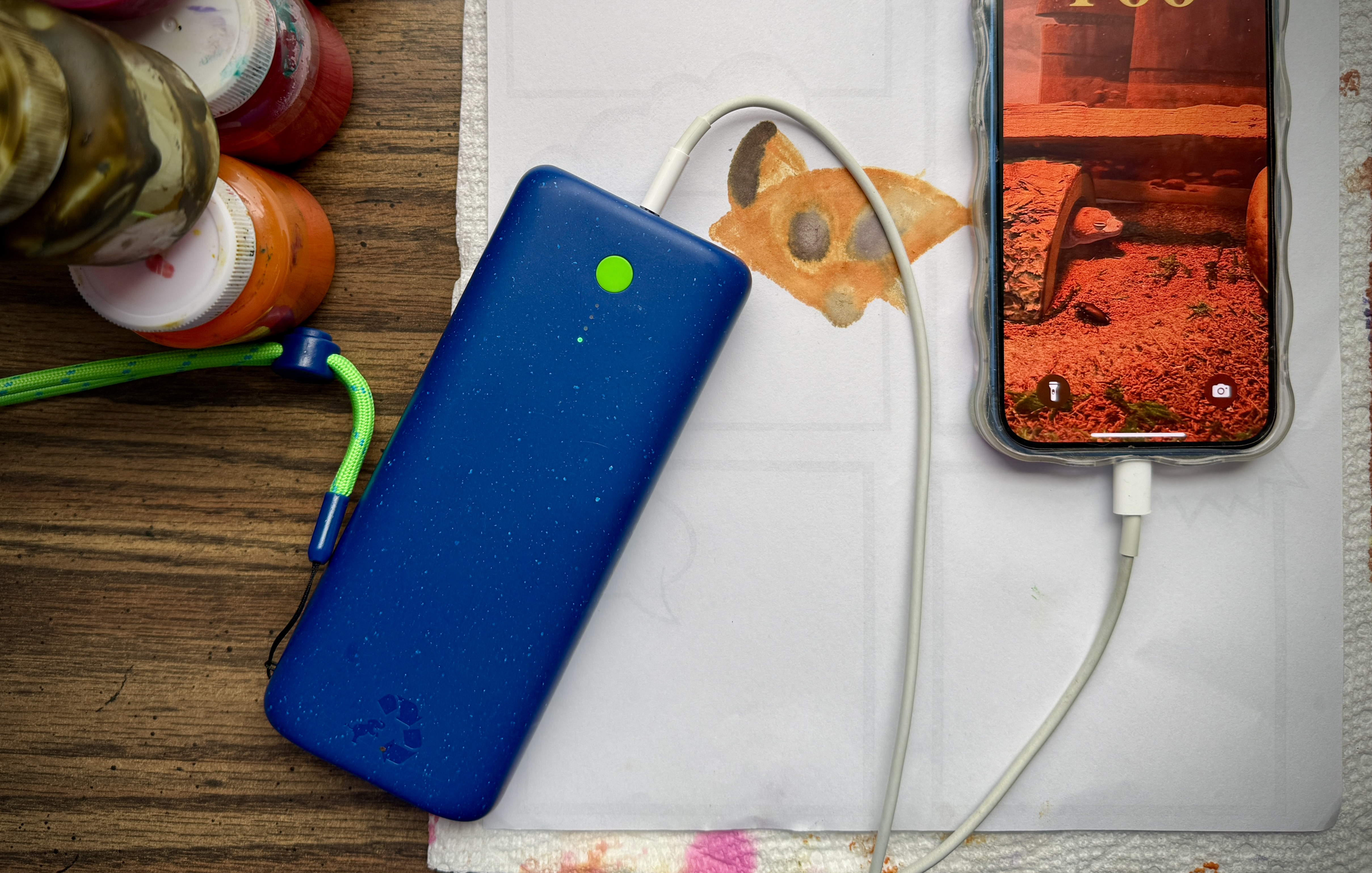
Price & Value
There’s an old adage that you “get what you pay for.” While that may have been true with electronics a few years ago, many brands now aim to provide their customers with the most innovative solutions possible. Because of this, pricing structures aren’t as easy to understand.
Take, for instance, the Dark Energy Poseidon Pro. At $120, that’s actually a really good price when you consider that you’re getting a 10,000 mAh power bank rated for extreme outdoor conditions. However, Elcom, a lesser-known brand, offers its Nestout 15,000mAh Outdoor Battery for half that price. It boasts the same weather protection features and durability but has one more outlet and contains a 15,000 mAh battery.
Where there’s no clear way to define which of these is premium, budget, or even mid-tier in terms of classifications, we can tell you what to expect to pay for a power bank based on its capacity and features.
Sub-10,000 mAh
As we’ve said throughout this guide, power banks that are less than 10,000 mAh are usually purpose-built for smaller devices. These are great for things like earbuds and fitness trackers. They can also give a smartphone a single full charge, making them great in emergencies. Additionally, based on their size and purpose, they generally only have one output.
The Hinovo Magnetic Charger has 15W wireless charging, but it can only charge an iPhone. This power bank has no additional outputs and is, therefore, purpose-built.
The Goal Zero Flip 24 fits this mold because, at 6,700 mAh, it brings a smartphone back from near death to a full charge one time before it needs to be recharged. It has one USB-A input for recharging and a single USB-A output for charging your devices. The Nestout 5000mAh Carabiner Battery ($45) is super portable and convenient and has a USB-C output for charging. You can expect to pay less than $50 for power banks like this.
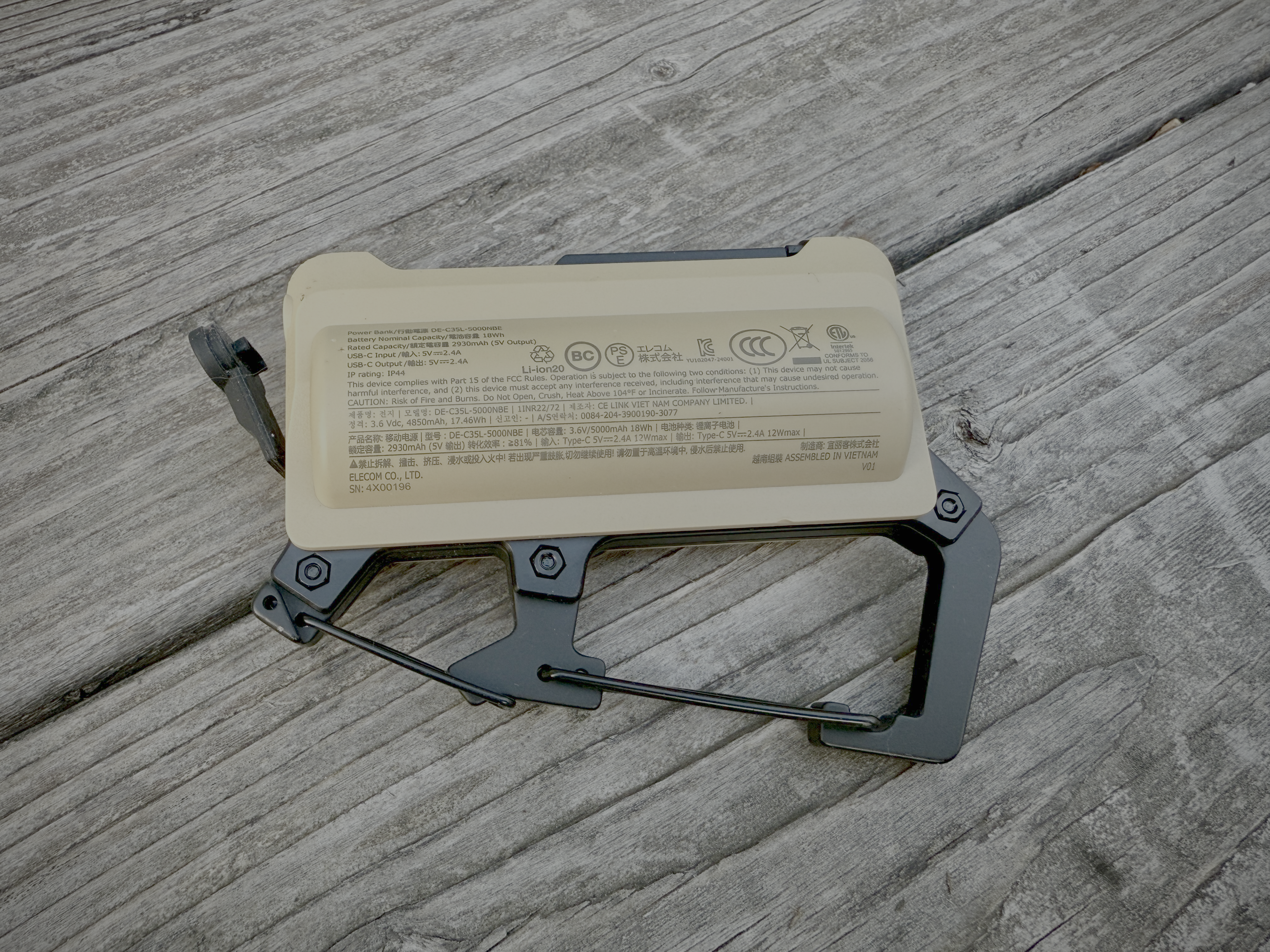
10,000 mAh-15,000 mAh
Power banks in this range are the most common and the most diverse. These are designed to charge a wider variety of devices from earbuds to tablets. They can even come in handy in a pinch if you need to get a little juice to your laptop.
These power banks could have a wide array of inputs or outputs like the Skullcandy Fat Stash 2). This makes them more versatile, either in being recharged or in charging more than one device.
These power banks, which are also aimed at portability, may have some extra features like durability and water resistance. The Nestout 15000mAh Outdoor Battery has a wider array of inputs and outputs but are also rated for use and abuse in the outdoors. These power banks have been rated for higher drops and being submerged in water. For this range of power banks, you can pay anywhere from $20 to $160.
20,000 mAh and Larger
Power banks with a capacity rating of 20,000 mAh or larger are the most versatile of the group. They offer the greatest array of inputs and outputs as they are designed to charge multiple devices at once or charge a single device multiple times.
These power banks are less portable and designed to go in your backpack instead of your pocket. They’re great for remote work, as they can keep your laptop up and running when there’s no wall outlet around. They’re also great for base camp or vacation, as they can service all the electronics in your party.
The BioLite Charge 100 Max fits this mold perfectly. At over 1 pound, you won’t want to carry it around in your pocket (unless you have a really good belt), but it can sufficiently charge up to five devices. We’re seeing a larger assortment of this size power bank hit the market as more people are working remotely and more of our devices require more power.
You can expect to pay between $80 and $250 for power banks in this range.
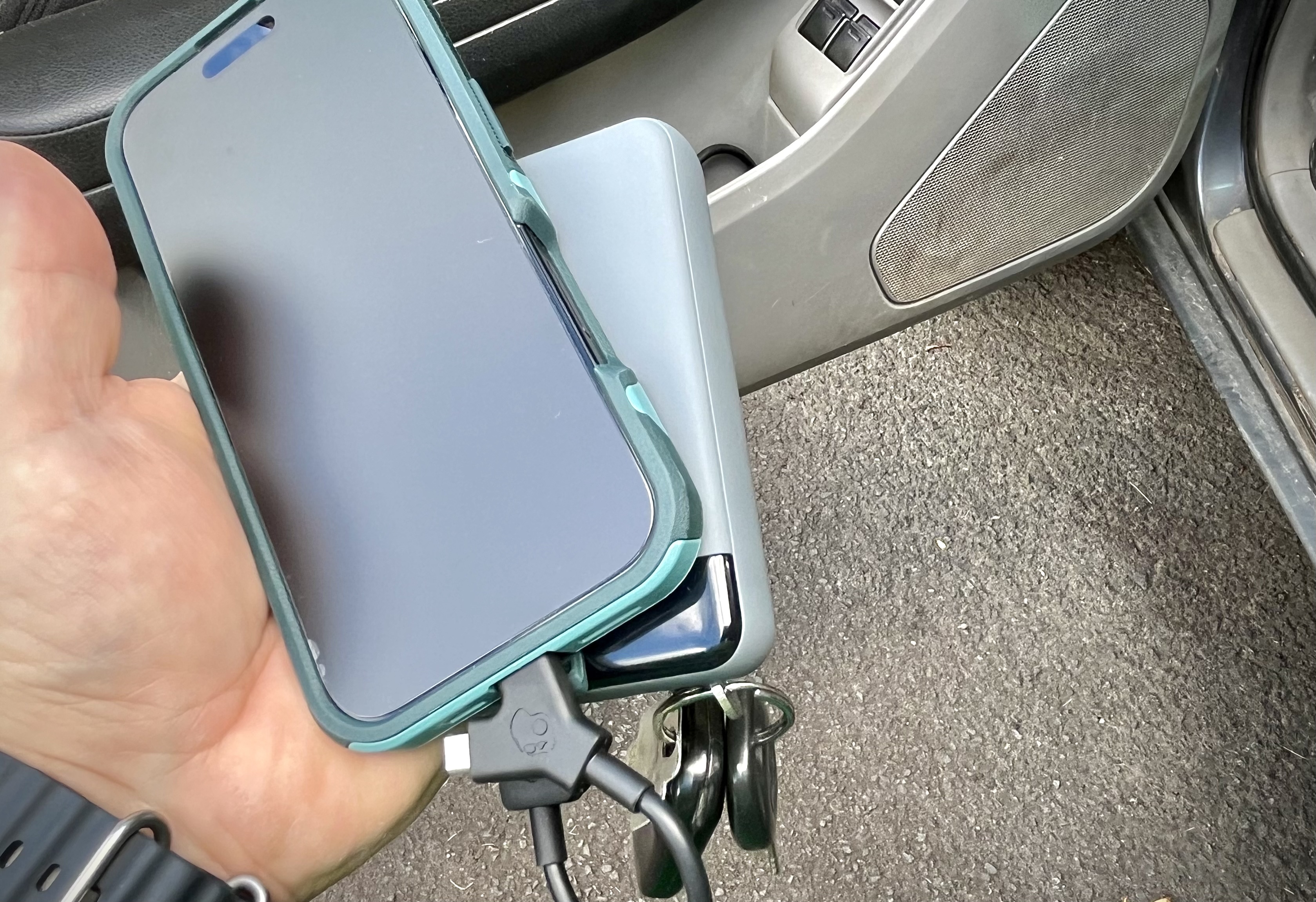
Frequently Asked Questions
If treated properly, the power banks on this list should perform reliably for several years. All batteries degrade with time and regular use. Most modern products can be fully charged and discharged about 1,000 times before they no longer function. For most users, this equates to 3-5 years’ worth of use.
All of the power banks on this list are relatively small and portable. The majority of users pick 10,000 mAh to 15,000 mAh power banks, a good choice for recharging a personal smartphone.
Compact 10,000 mAh options like the Skullcandy Fat Stash 2 and the Nitecore NB 10000 offer a nice balance between utility and portability. They fit in a pant pocket, and they pack enough power to keep a smartphone or satellite messenger alive for several days without a wall outlet.
If you plan to charge larger devices like a tablet or laptop, we recommend sizing up to the 20,000+ mAh range. These products typically weigh 1-2 pounds and are still compact enough for hiking, traveling, etc. On this list, the BioLite Charge 100 Max is our top choice for these situations.
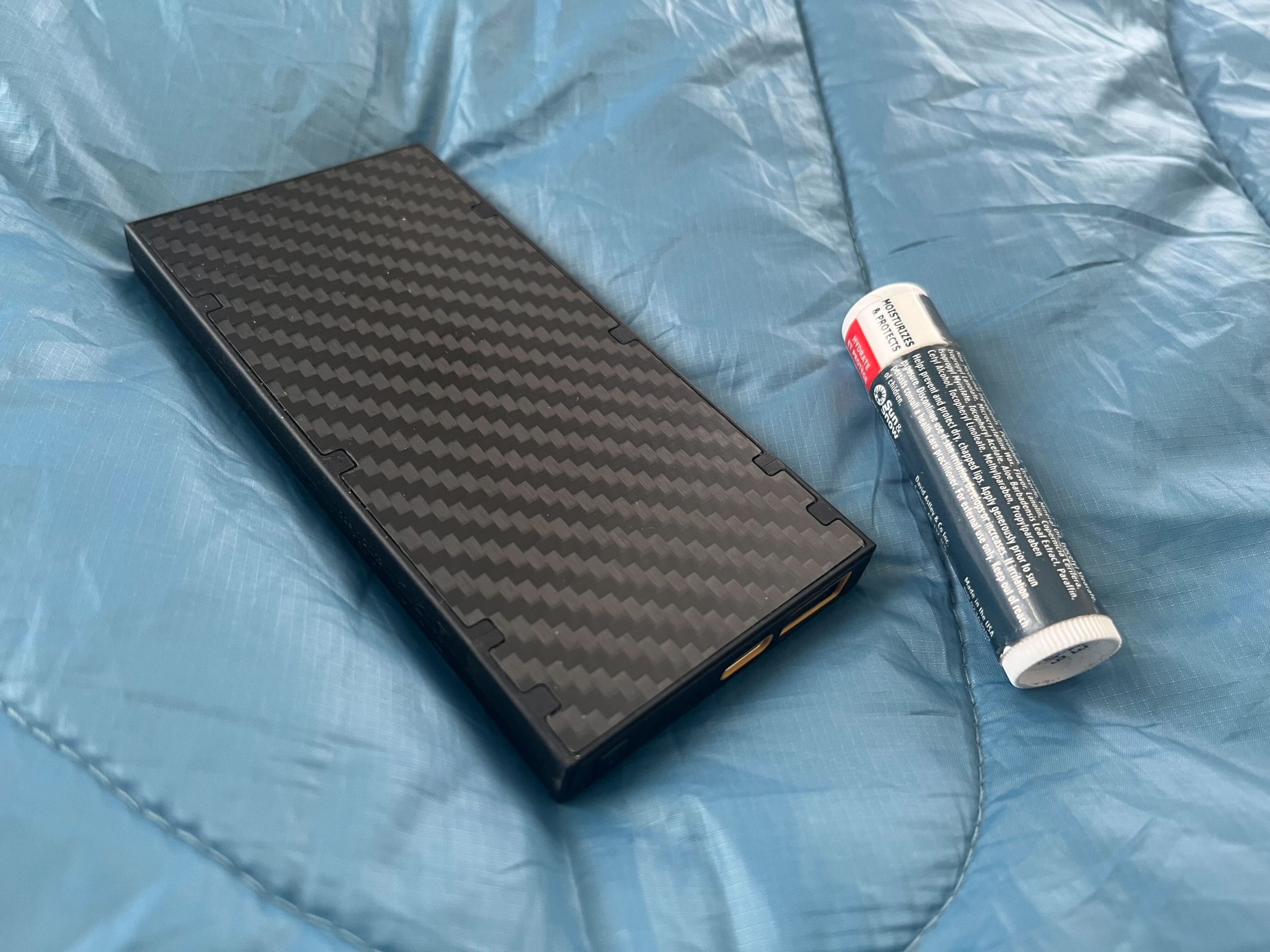
Most small portable option can be carried onto an airplane. According to TSA, power banks cannot be kept in checked luggage. Certain airports don’t allow passengers to travel with more than 27,000 mAh in total battery storage.
It’s been a long-standing, widely accepted fact that electricity on water do not mix. However, with electronics becoming more prevalent in our day-to-day lives, power bank manufacturers are realizing that their products will be used outside.
Power banks like the Dark Energy Poseidon Pro 10200 are designed to deliver power to your devices in the worst weather conditions. It carries an IP68 rating, and all of its ports can be covered when the device is not in use.

The Best Fitness Watches of 2025
We tested the best fitness watches of 2025 with options for every budget. Our top picks include Garmin, COROS, and more!

The Best Satellite Messengers of 2025
Failure isn’t an option when it comes to choosing a satellite messenger. When you absolutely need to get the word out, here are the best sat messaging devices in 2025.

